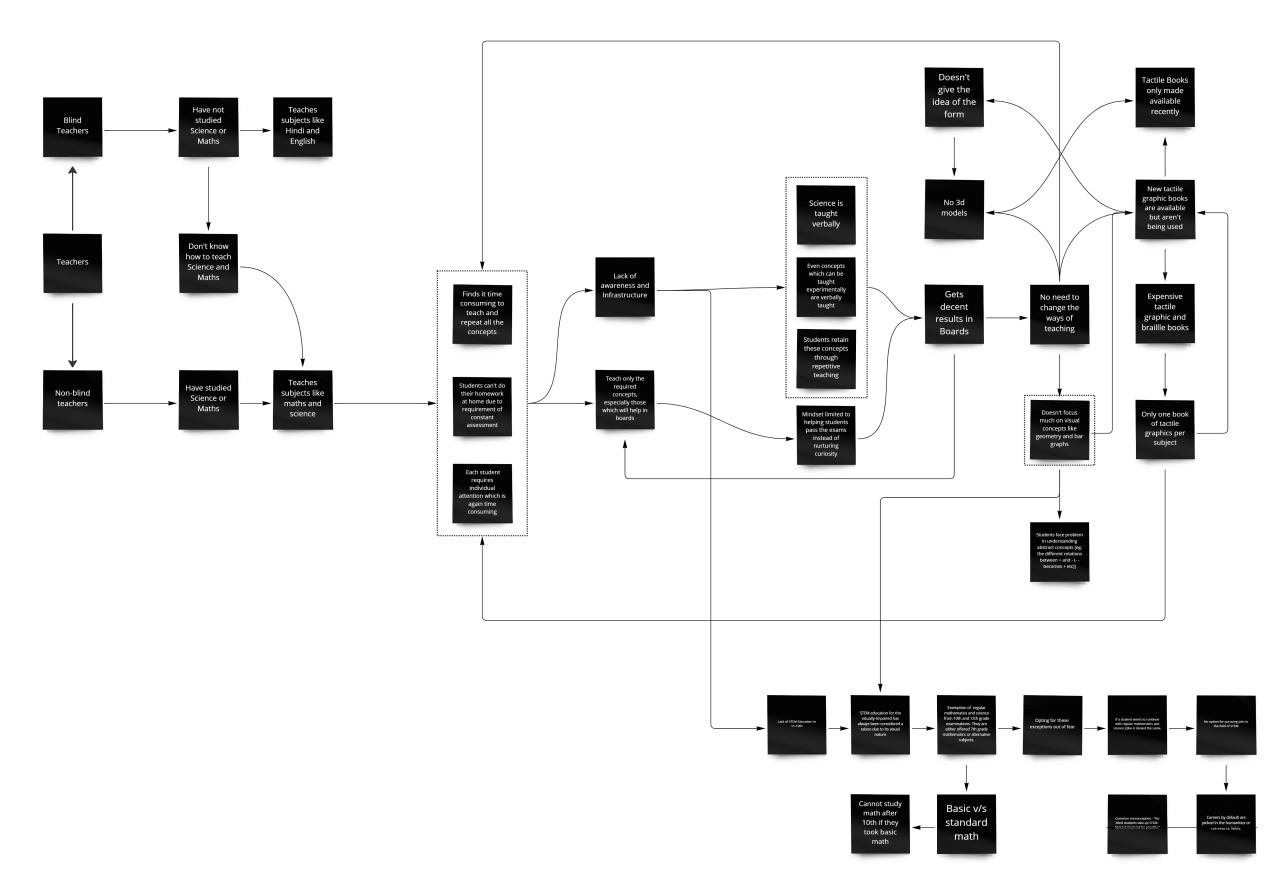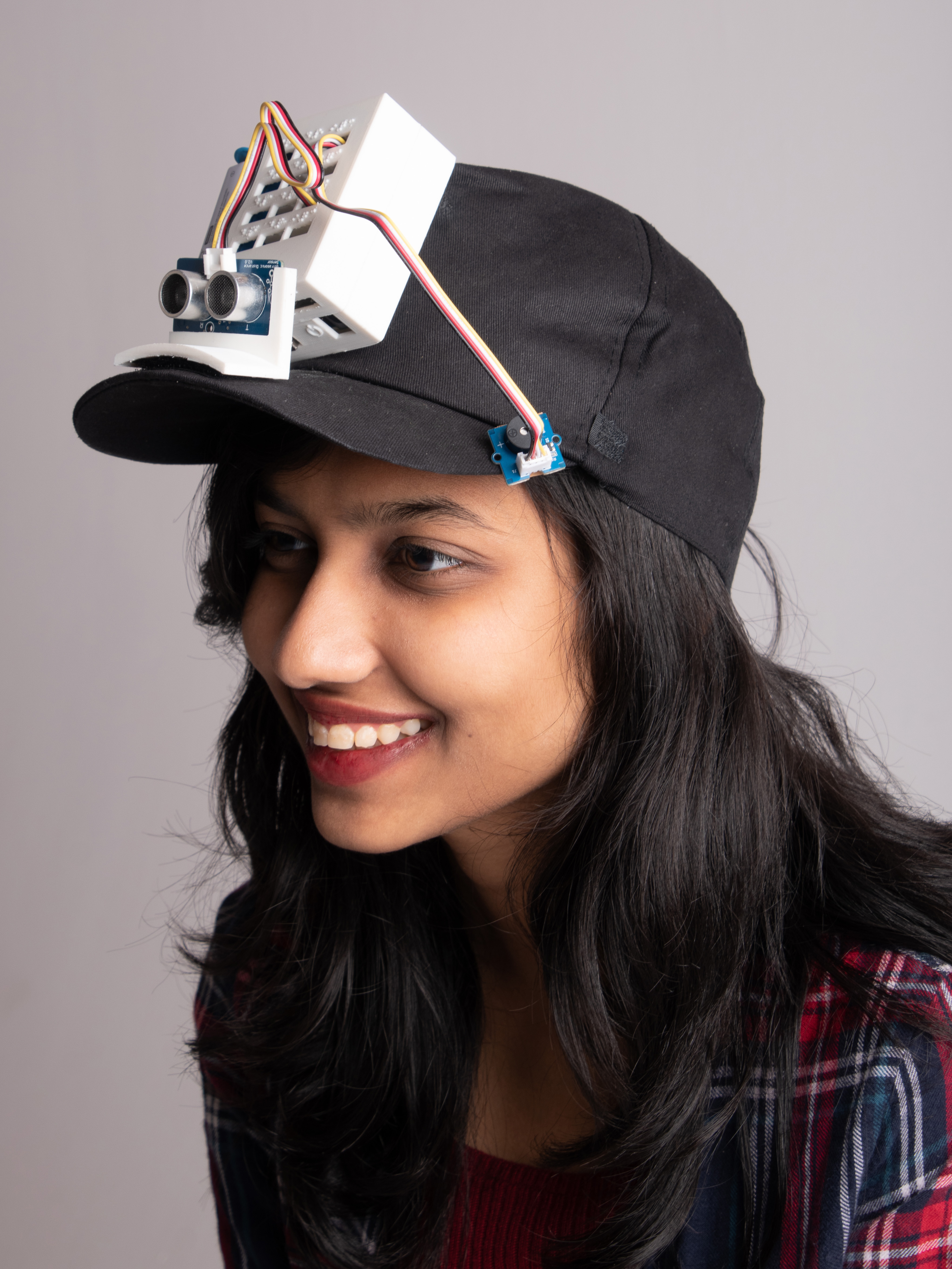Sensee
Client
YEAR
Domain
adqevqe-p-2000.jpg)
STEM education empowers individuals to be self-sufficient and empathetic, yet visually impaired students are often excluded due to inaccessible teaching methods and costly resources. Conceptual clarity is hindered by verbal instruction, practical experiments remain visual-centric, and abstract concepts lack tactile representation. This project aims to develop affordable DIY science/robotics kits to enable hands-on learning and bridge the inclusion gap in STEM education.
context
In most Indian classrooms, science is a subject taught through diagrams on a blackboard, visual demonstrations, and sight-based observation. But for millions of children with visual impairments, these lessons often remain out of reach — not because of a lack of intelligence or curiosity, but because the system was never designed with them in mind.
Despite legal mandates for inclusive education, blind and low-vision students in India are still routinely excluded from pursuing science and mathematics, especially beyond middle school. This exclusion is rarely the result of a conscious decision — it’s the outcome of systemic inertia, limited infrastructure, untrained teachers, and deeply rooted cultural assumptions about what visually impaired children can or cannot do.
At the same time, STEM — Science, Technology, Engineering, and Mathematics — has never been more critical. It shapes our economy, our health systems, and the way we understand the world around us. For children who are already navigating life through alternate sensory modes, being locked out of STEM means being locked out of key tools for independence, participation, and opportunity.
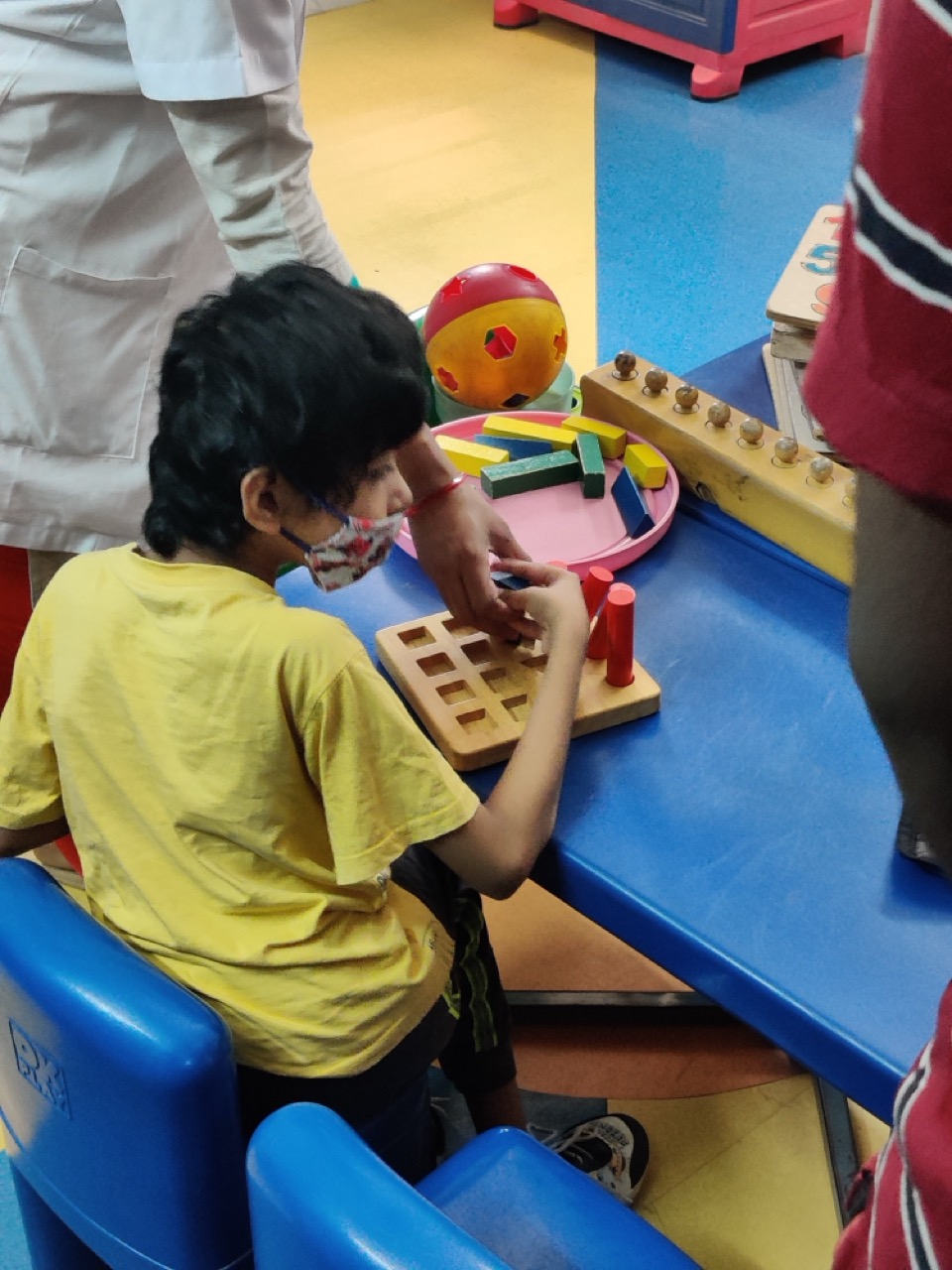








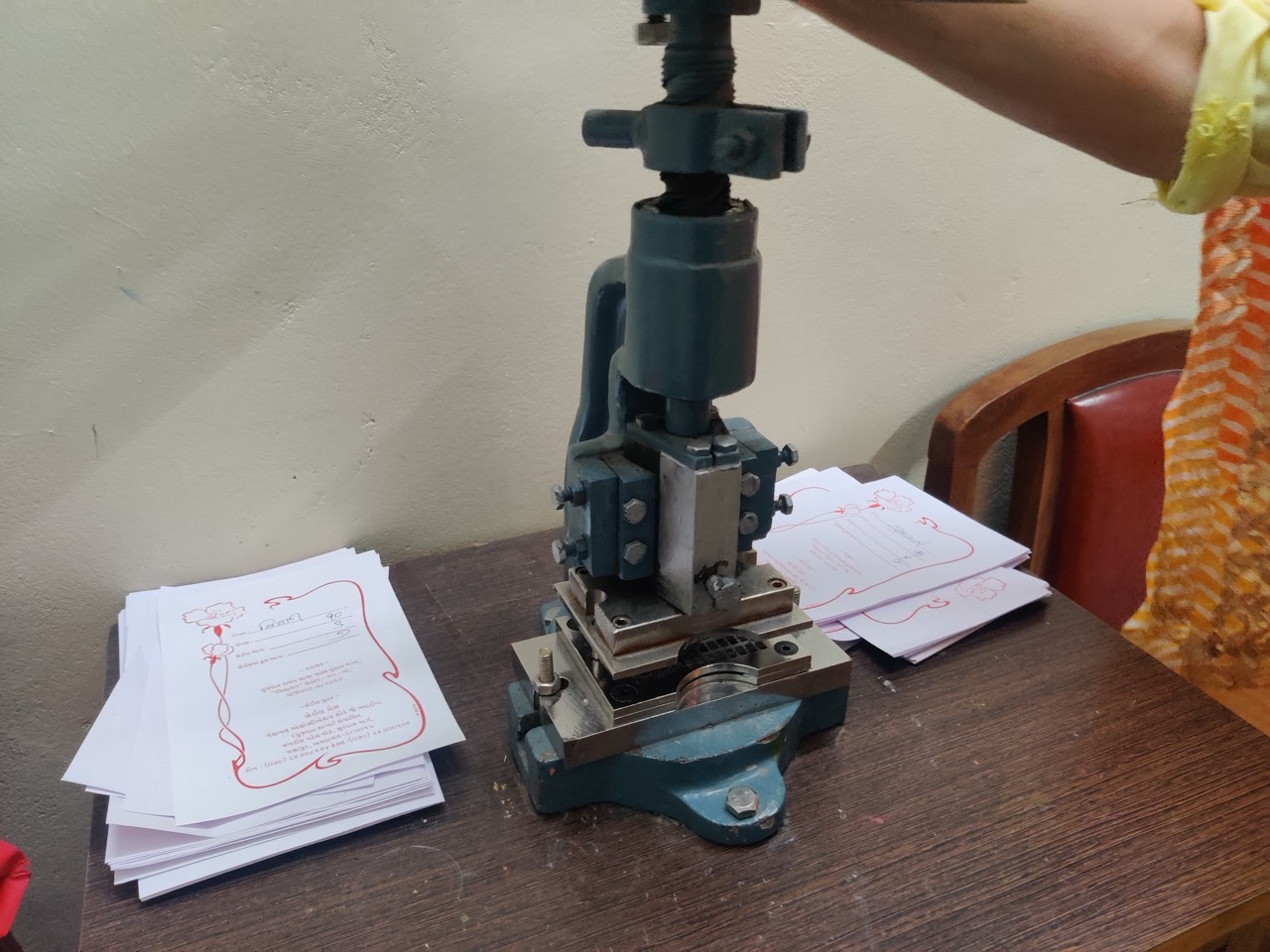

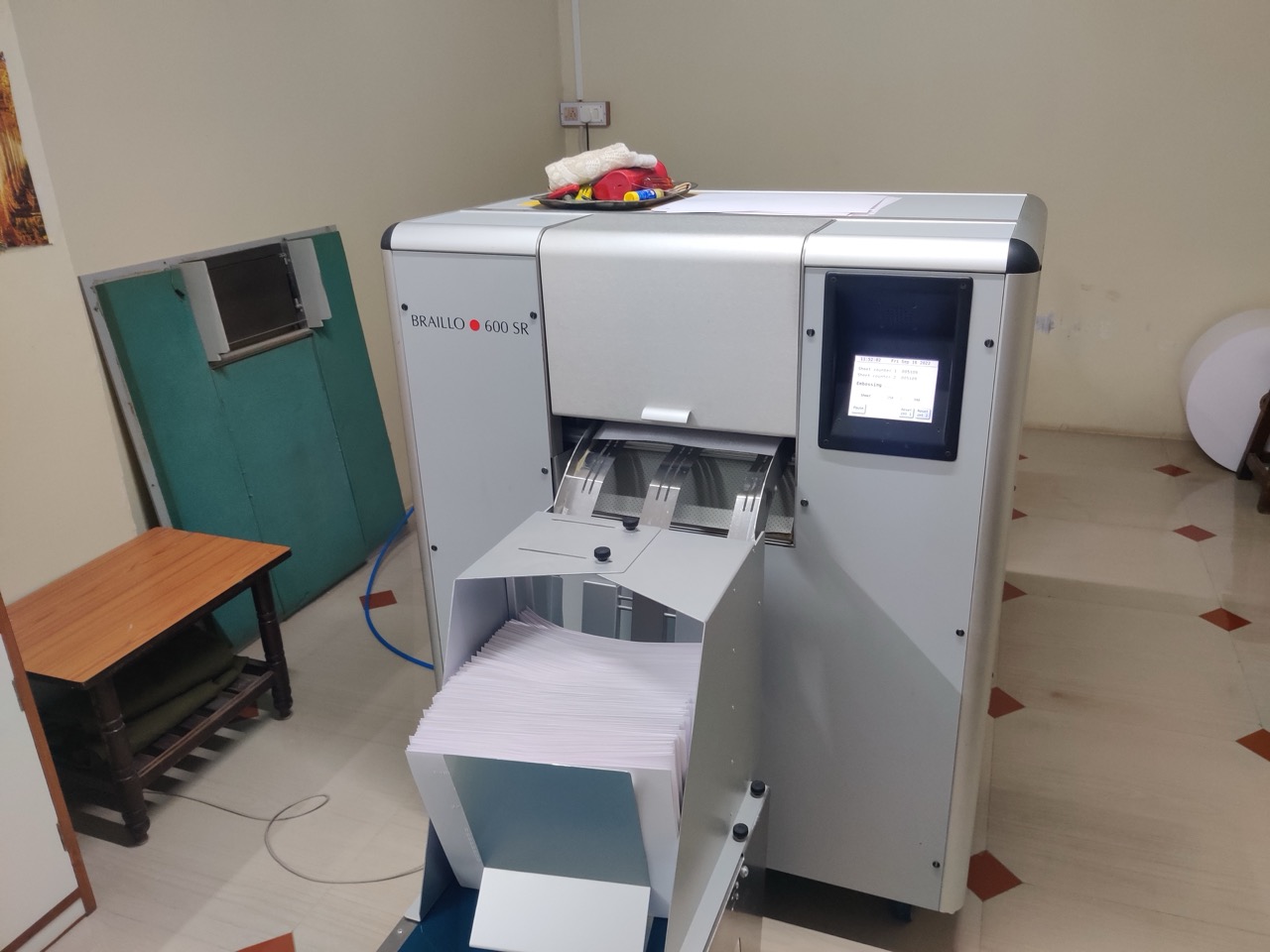
Process
Spark & Scope
Every project begins with a reason, and for us it was personal. We had seen vision loss up close with our grandparents: everyday tasks became harder, hobbies faded, routines slipped, and life felt smaller and more isolating.
We did not start with STEM in mind. We wanted to understand what it means to lose vision in a world built for sight and whether that experience had to feel like a dead end. We began by looking at hobbies because they restore agency and joy. If painting, sewing, or tinkering with tech could be made accessible, even small wins might rebuild confidence and connection. We had no solution then, just a hunch that this space held possibility. That curiosity became our starting point.
Spark & Scope
Every project begins with a reason, and for us it was personal. We had seen vision loss up close with our grandparents: everyday tasks became harder, hobbies faded, routines slipped, and life felt smaller and more isolating.
We did not start with STEM in mind. We wanted to understand what it means to lose vision in a world built for sight and whether that experience had to feel like a dead end. We began by looking at hobbies because they restore agency and joy. If painting, sewing, or tinkering with tech could be made accessible, even small wins might rebuild confidence and connection. We had no solution then, just a hunch that this space held possibility. That curiosity became our starting point.
Spark & Scope
Every project begins with a reason, and for us it was personal. We had seen vision loss up close with our grandparents: everyday tasks became harder, hobbies faded, routines slipped, and life felt smaller and more isolating.
We did not start with STEM in mind. We wanted to understand what it means to lose vision in a world built for sight and whether that experience had to feel like a dead end. We began by looking at hobbies because they restore agency and joy. If painting, sewing, or tinkering with tech could be made accessible, even small wins might rebuild confidence and connection. We had no solution then, just a hunch that this space held possibility. That curiosity became our starting point.


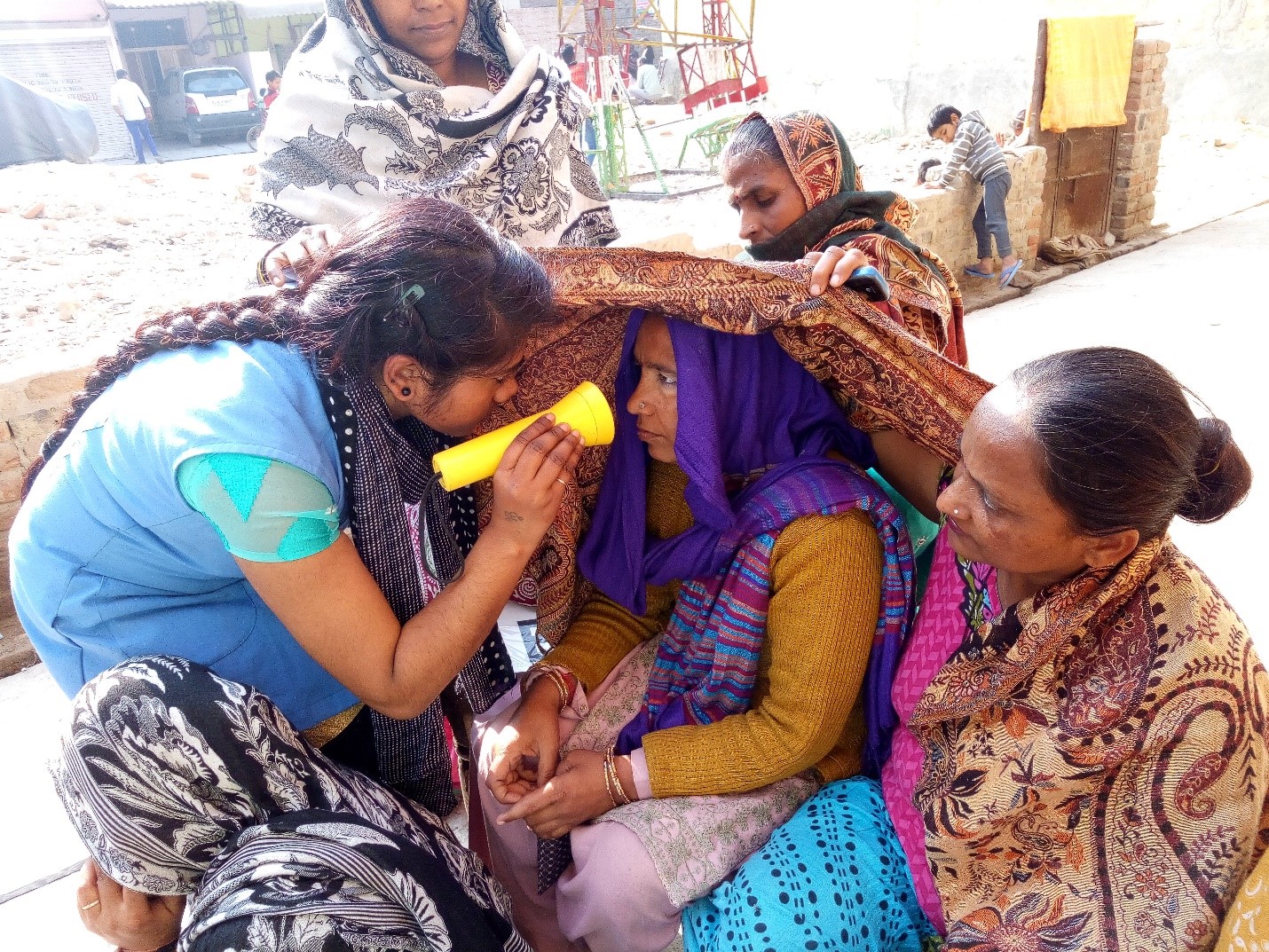
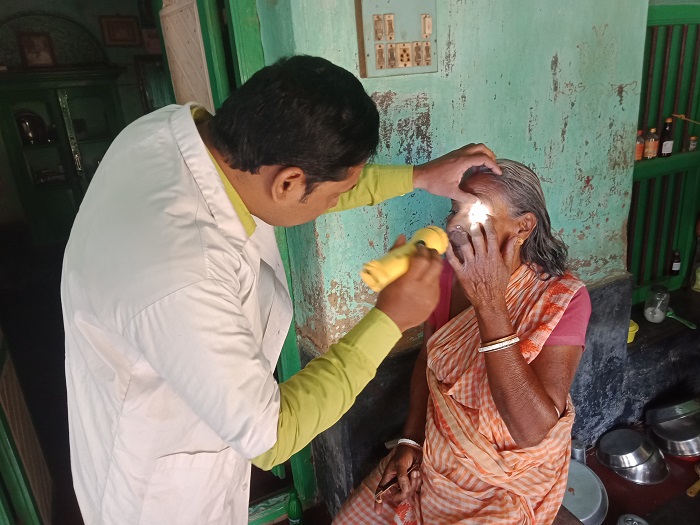
Immersion & First Visits
We started with hobbies, not school. We wanted to see if design could bring back small joys like painting, electronics, or music. A visit to the Blind People’s Association in Ahmedabad changed our frame entirely.
At BPA, guided by Gayathri Menon and welcomed by Dr. Ranchhod Soni, we saw braille devices, tactile tools, screen readers, and audio interfaces in everyday use. More than the tech, the people reset our assumptions: a visually impaired drummer performed with precision and confidence, and it made us question why that surprised us at all.
In the “Vision in the Dark” activity we experienced how completely the world assumes sight. Students were energetic and competitive in goalball and football with bells, a chess player beat us, and a coding club used screen readers to learn logic and debugging. When we asked about pursuing this further, the answer was steady: science stops after Class 10. Teachers often read that as lack of interest, but the students we met were curious and capable. The pattern pointed to absence and access, not ability. What began as a small brief about hobbies opened into a systemic question about why science and therefore STEM pathways remains out of reach for students with visual impairment.

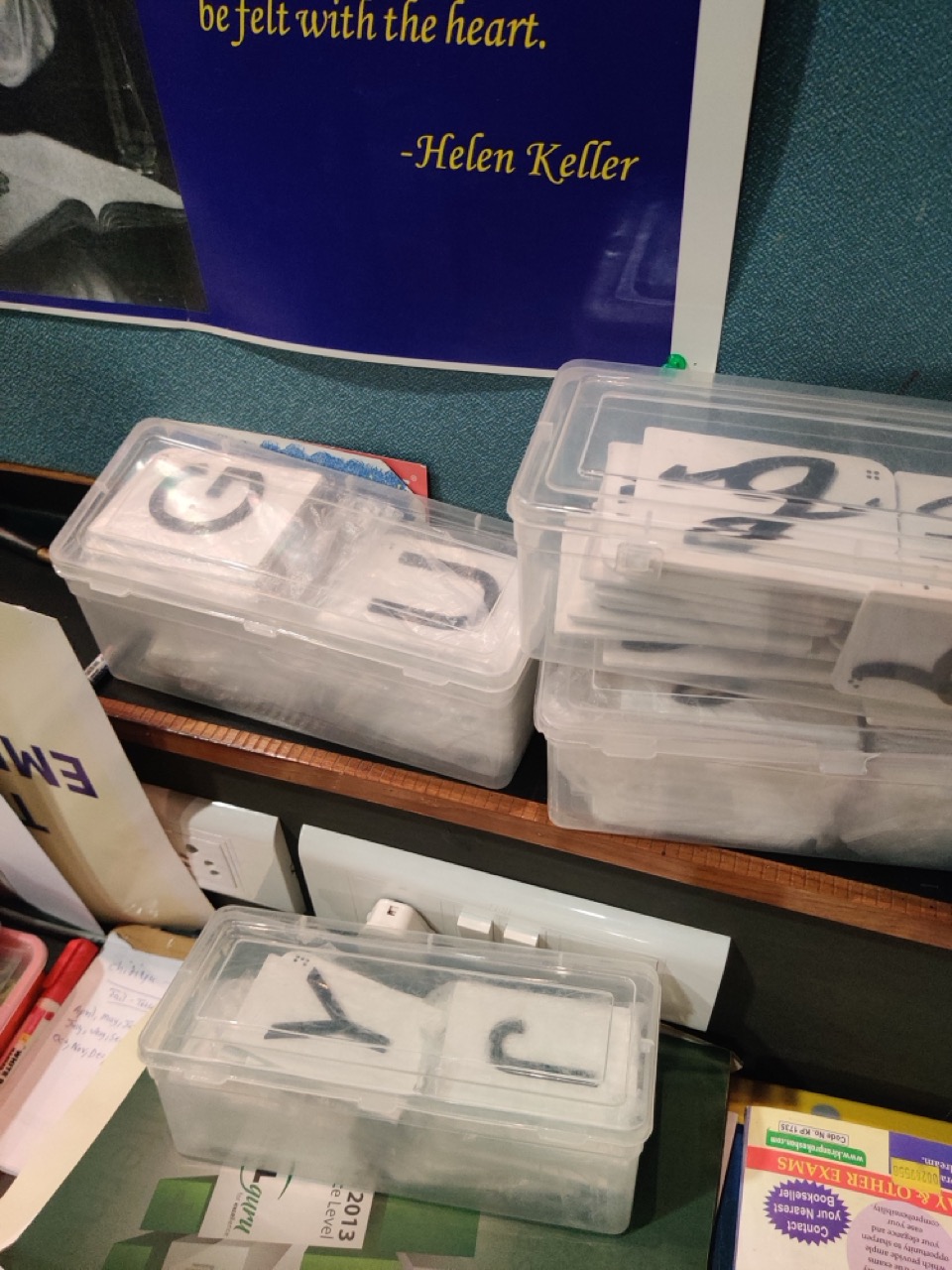

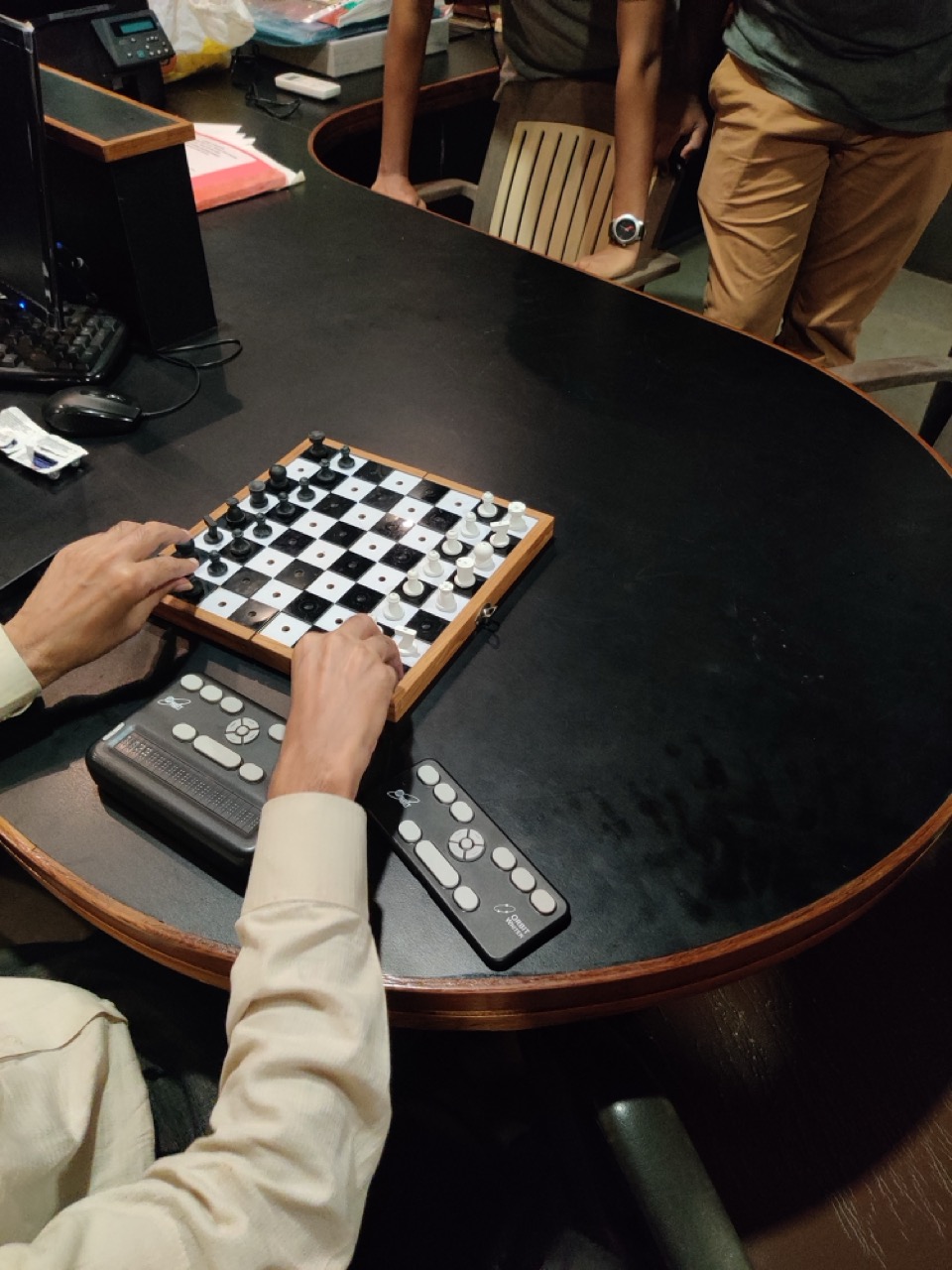


Immersion & First Visits
We started with hobbies, not school. We wanted to see if design could bring back small joys like painting, electronics, or music. A visit to the Blind People’s Association in Ahmedabad changed our frame entirely.
At BPA, guided by Gayathri Menon and welcomed by Dr. Ranchhod Soni, we saw braille devices, tactile tools, screen readers, and audio interfaces in everyday use. More than the tech, the people reset our assumptions: a visually impaired drummer performed with precision and confidence, and it made us question why that surprised us at all.
In the “Vision in the Dark” activity we experienced how completely the world assumes sight. Students were energetic and competitive in goalball and football with bells, a chess player beat us, and a coding club used screen readers to learn logic and debugging. When we asked about pursuing this further, the answer was steady: science stops after Class 10. Teachers often read that as lack of interest, but the students we met were curious and capable. The pattern pointed to absence and access, not ability. What began as a small brief about hobbies opened into a systemic question about why science and therefore STEM pathways remains out of reach for students with visual impairment.
Immersion & First Visits
We started with hobbies, not school. We wanted to see if design could bring back small joys like painting, electronics, or music. A visit to the Blind People’s Association in Ahmedabad changed our frame entirely.
At BPA, guided by Gayathri Menon and welcomed by Dr. Ranchhod Soni, we saw braille devices, tactile tools, screen readers, and audio interfaces in everyday use. More than the tech, the people reset our assumptions: a visually impaired drummer performed with precision and confidence, and it made us question why that surprised us at all.
In the “Vision in the Dark” activity we experienced how completely the world assumes sight. Students were energetic and competitive in goalball and football with bells, a chess player beat us, and a coding club used screen readers to learn logic and debugging. When we asked about pursuing this further, the answer was steady: science stops after Class 10. Teachers often read that as lack of interest, but the students we met were curious and capable. The pattern pointed to absence and access, not ability. What began as a small brief about hobbies opened into a systemic question about why science and therefore STEM pathways remains out of reach for students with visual impairment.
Immersion & First Visits
We started with hobbies, not school. We wanted to see if design could bring back small joys like painting, electronics, or music. A visit to the Blind People’s Association in Ahmedabad changed our frame entirely.
At BPA, guided by Gayathri Menon and welcomed by Dr. Ranchhod Soni, we saw braille devices, tactile tools, screen readers, and audio interfaces in everyday use. More than the tech, the people reset our assumptions: a visually impaired drummer performed with precision and confidence, and it made us question why that surprised us at all.
In the “Vision in the Dark” activity we experienced how completely the world assumes sight. Students were energetic and competitive in goalball and football with bells, a chess player beat us, and a coding club used screen readers to learn logic and debugging. When we asked about pursuing this further, the answer was steady: science stops after Class 10. Teachers often read that as lack of interest, but the students we met were curious and capable. The pattern pointed to absence and access, not ability. What began as a small brief about hobbies opened into a systemic question about why science and therefore STEM pathways remains out of reach for students with visual impairment.






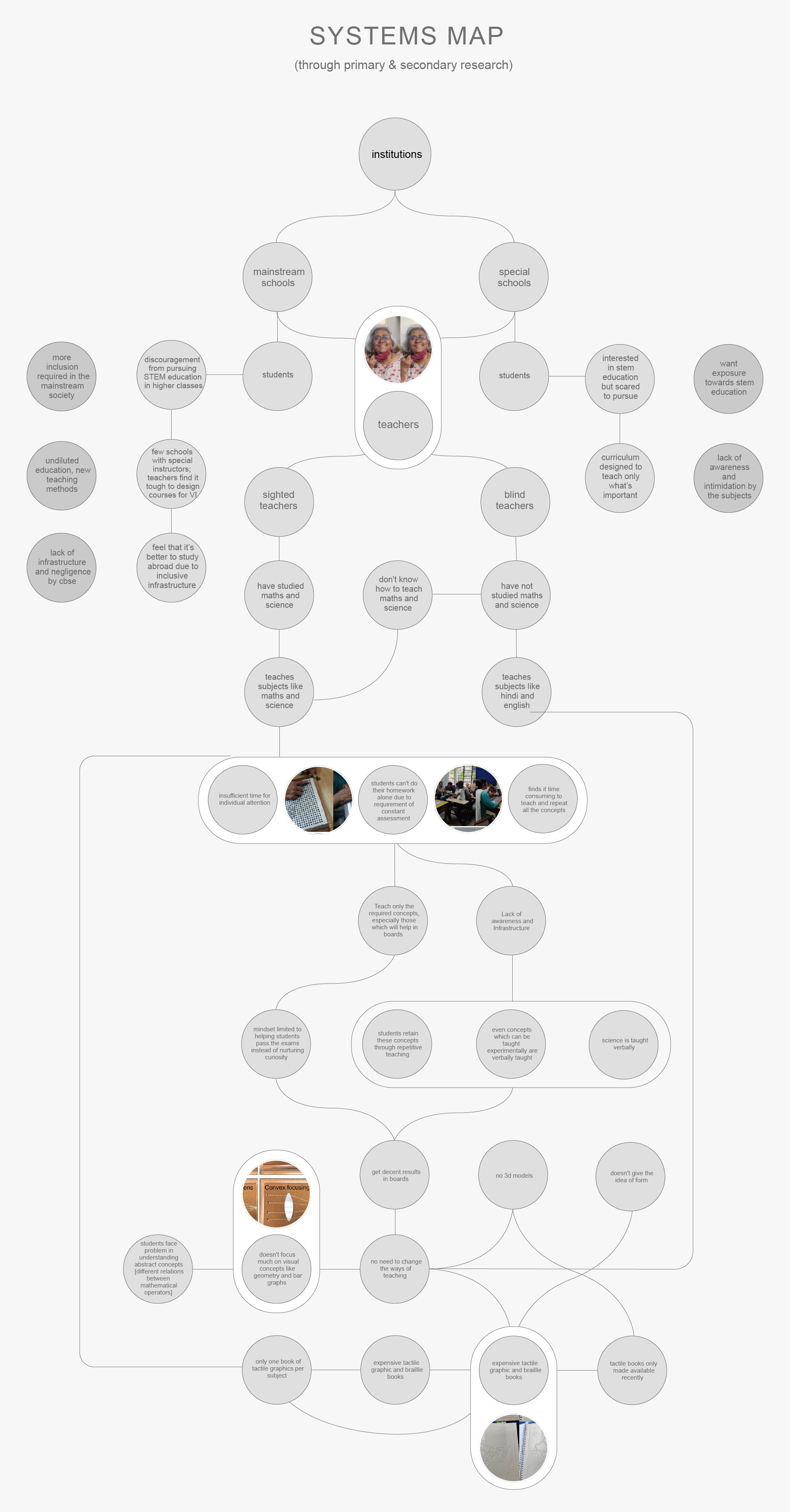
Problem Reframe
We realised this was bigger than tools. We needed to understand the systems making STEM inaccessible for visually impaired students.
We looked from three directions: interviews with students, teachers and inclusion experts, secondary research on national and global trends, and on-ground observation across schools and learning spaces. Early patterns showed it was not a single barrier but a web of small and large frictions that together created exclusion from science and technical streams.
Macro view of the problem
The numbers told the same story as the field. Scale is high, access is low, and STEM pathways are largely closed.
India has a large population of visually impaired children, many of whom attend school, yet progression into science and technical streams is rare. Studies and sector reports note that accessible STEM materials and support are scarce, while global data shows a broader underrepresentation of visually impaired learners in STEM because teaching still leans on sight first. In India the challenge is sharper due to limited resources and persistent stigma, which compounds the access gap.
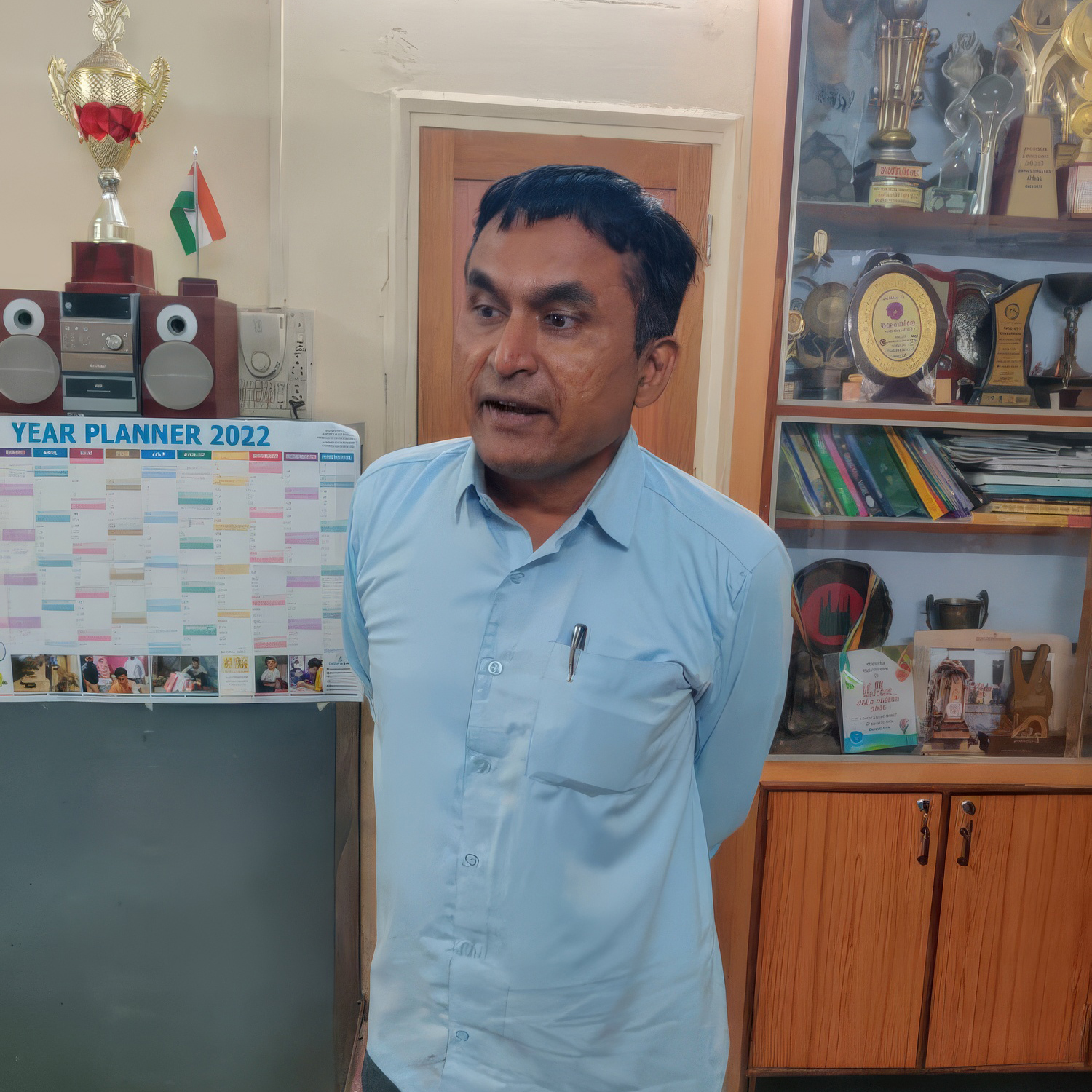
First-hand insights: Minnie Cama School
We saw ambition in students and limits in the system. Science was not discouraged, it simply did not exist as an option.
At Minnie Cama Secondary School for the Blind, the principal walked us through their approach. We learned students could not take the science stream in grades eleven and twelve, even though some represented India in sport. Several students had tried moving schools to study science and were denied for lack of infrastructure. The contrast between capability and opportunity was clear.
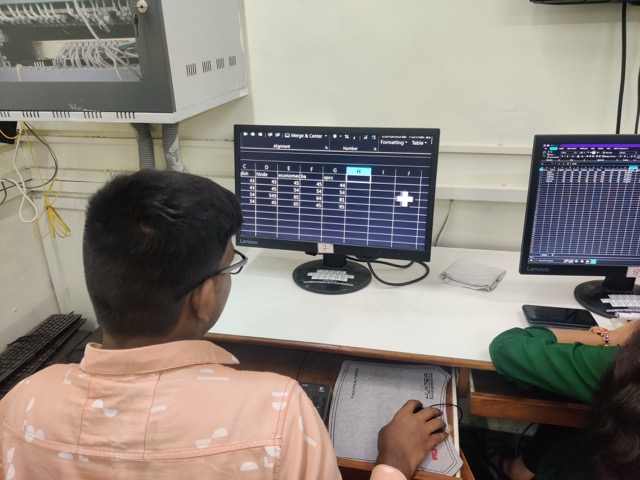
First-hand insights: BPA IT Cell
We watched how screen readers enable computing, and where current tools break for coding.
In BPA’s IT cell, Medhaben showed how students use NVDA and JAWS. We observed an Excel class and the linear nature of screen readers made scanning and editing difficult. The challenge becomes tougher in programming, where learners must jump across lines, inspect state and debug. Many struggled not for lack of logic but because the interfaces were not designed with their workflows in mind.
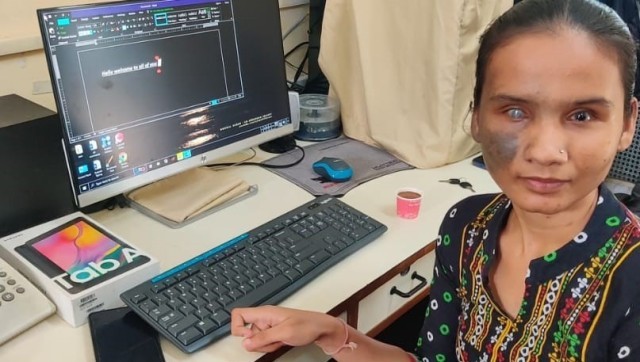
Manjot’s story
One lived journey connected the dots between policy, practice and persistence.
Mansi reached out to her school friend Manjot Singh, who lost his vision in Class four and later pursued Physics, Chemistry and Math, fighting to be allowed into the stream. He is now studying Computer Science and Economics with a minor in Psychology at UBC and enjoys cooking, guitar, gaming and coding. He described relying on descriptions and tactile graphing tools, improvising unsafe chemistry practicals by smell, and needing science eligibility for C++ classes that most visually impaired students never get. He also noted how institutions often lack mandated accommodations. His experience reinforced what we were seeing on the ground: STEM access is not only a resource gap but a structural and policy problem that demands deeper intervention.
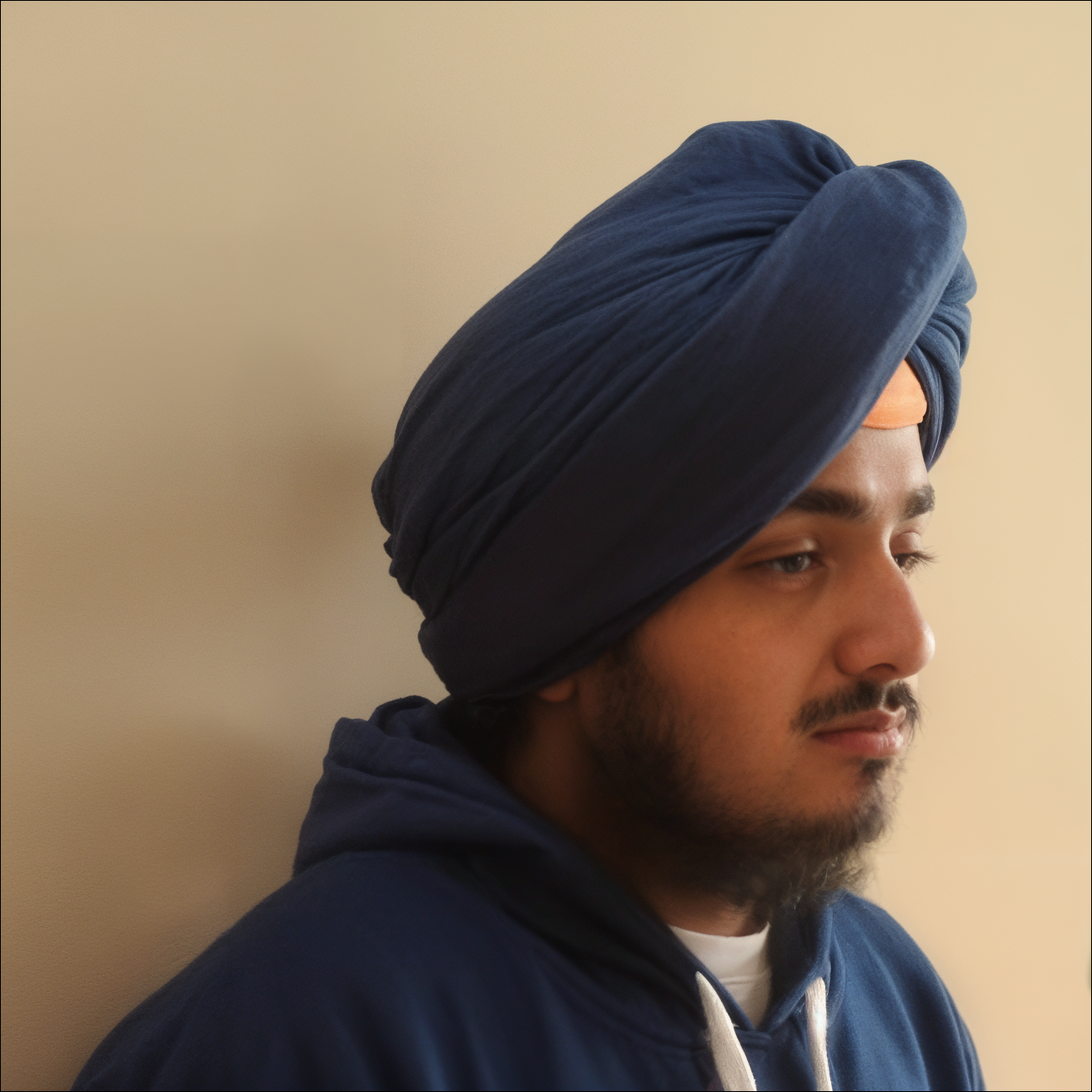
Problem Reframe
We realised this was bigger than tools. We needed to understand the systems making STEM inaccessible for visually impaired students.
We looked from three directions: interviews with students, teachers and inclusion experts, secondary research on national and global trends, and on-ground observation across schools and learning spaces. Early patterns showed it was not a single barrier but a web of small and large frictions that together created exclusion from science and technical streams.
Macro view of the problem
The numbers told the same story as the field. Scale is high, access is low, and STEM pathways are largely closed.
India has a large population of visually impaired children, many of whom attend school, yet progression into science and technical streams is rare. Studies and sector reports note that accessible STEM materials and support are scarce, while global data shows a broader underrepresentation of visually impaired learners in STEM because teaching still leans on sight first. In India the challenge is sharper due to limited resources and persistent stigma, which compounds the access gap.

First-hand insights: Minnie Cama School
We saw ambition in students and limits in the system. Science was not discouraged, it simply did not exist as an option.
At Minnie Cama Secondary School for the Blind, the principal walked us through their approach. We learned students could not take the science stream in grades eleven and twelve, even though some represented India in sport. Several students had tried moving schools to study science and were denied for lack of infrastructure. The contrast between capability and opportunity was clear.

First-hand insights: BPA IT Cell
We watched how screen readers enable computing, and where current tools break for coding.
In BPA’s IT cell, Medhaben showed how students use NVDA and JAWS. We observed an Excel class and the linear nature of screen readers made scanning and editing difficult. The challenge becomes tougher in programming, where learners must jump across lines, inspect state and debug. Many struggled not for lack of logic but because the interfaces were not designed with their workflows in mind.

Manjot’s story
One lived journey connected the dots between policy, practice and persistence.
Mansi reached out to her school friend Manjot Singh, who lost his vision in Class four and later pursued Physics, Chemistry and Math, fighting to be allowed into the stream. He is now studying Computer Science and Economics with a minor in Psychology at UBC and enjoys cooking, guitar, gaming and coding. He described relying on descriptions and tactile graphing tools, improvising unsafe chemistry practicals by smell, and needing science eligibility for C++ classes that most visually impaired students never get. He also noted how institutions often lack mandated accommodations. His experience reinforced what we were seeing on the ground: STEM access is not only a resource gap but a structural and policy problem that demands deeper intervention.

Problem Reframe
We realised this was bigger than tools. We needed to understand the systems making STEM inaccessible for visually impaired students.
We looked from three directions: interviews with students, teachers and inclusion experts, secondary research on national and global trends, and on-ground observation across schools and learning spaces. Early patterns showed it was not a single barrier but a web of small and large frictions that together created exclusion from science and technical streams.
Macro view of the problem
The numbers told the same story as the field. Scale is high, access is low, and STEM pathways are largely closed.
India has a large population of visually impaired children, many of whom attend school, yet progression into science and technical streams is rare. Studies and sector reports note that accessible STEM materials and support are scarce, while global data shows a broader underrepresentation of visually impaired learners in STEM because teaching still leans on sight first. In India the challenge is sharper due to limited resources and persistent stigma, which compounds the access gap.

First-hand insights: Minnie Cama School
We saw ambition in students and limits in the system. Science was not discouraged, it simply did not exist as an option.
At Minnie Cama Secondary School for the Blind, the principal walked us through their approach. We learned students could not take the science stream in grades eleven and twelve, even though some represented India in sport. Several students had tried moving schools to study science and were denied for lack of infrastructure. The contrast between capability and opportunity was clear.

First-hand insights: BPA IT Cell
We watched how screen readers enable computing, and where current tools break for coding.
In BPA’s IT cell, Medhaben showed how students use NVDA and JAWS. We observed an Excel class and the linear nature of screen readers made scanning and editing difficult. The challenge becomes tougher in programming, where learners must jump across lines, inspect state and debug. Many struggled not for lack of logic but because the interfaces were not designed with their workflows in mind.

Manjot’s story
One lived journey connected the dots between policy, practice and persistence.
Mansi reached out to her school friend Manjot Singh, who lost his vision in Class four and later pursued Physics, Chemistry and Math, fighting to be allowed into the stream. He is now studying Computer Science and Economics with a minor in Psychology at UBC and enjoys cooking, guitar, gaming and coding. He described relying on descriptions and tactile graphing tools, improvising unsafe chemistry practicals by smell, and needing science eligibility for C++ classes that most visually impaired students never get. He also noted how institutions often lack mandated accommodations. His experience reinforced what we were seeing on the ground: STEM access is not only a resource gap but a structural and policy problem that demands deeper intervention.

Problem Reframe
We realised this was bigger than tools. We needed to understand the systems making STEM inaccessible for visually impaired students.
We looked from three directions: interviews with students, teachers and inclusion experts, secondary research on national and global trends, and on-ground observation across schools and learning spaces. Early patterns showed it was not a single barrier but a web of small and large frictions that together created exclusion from science and technical streams.
Macro view of the problem
The numbers told the same story as the field. Scale is high, access is low, and STEM pathways are largely closed.
India has a large population of visually impaired children, many of whom attend school, yet progression into science and technical streams is rare. Studies and sector reports note that accessible STEM materials and support are scarce, while global data shows a broader underrepresentation of visually impaired learners in STEM because teaching still leans on sight first. In India the challenge is sharper due to limited resources and persistent stigma, which compounds the access gap.

First-hand insights: Minnie Cama School
We saw ambition in students and limits in the system. Science was not discouraged, it simply did not exist as an option.
At Minnie Cama Secondary School for the Blind, the principal walked us through their approach. We learned students could not take the science stream in grades eleven and twelve, even though some represented India in sport. Several students had tried moving schools to study science and were denied for lack of infrastructure. The contrast between capability and opportunity was clear.

First-hand insights: BPA IT Cell
We watched how screen readers enable computing, and where current tools break for coding.
In BPA’s IT cell, Medhaben showed how students use NVDA and JAWS. We observed an Excel class and the linear nature of screen readers made scanning and editing difficult. The challenge becomes tougher in programming, where learners must jump across lines, inspect state and debug. Many struggled not for lack of logic but because the interfaces were not designed with their workflows in mind.

Manjot’s story
One lived journey connected the dots between policy, practice and persistence.
Mansi reached out to her school friend Manjot Singh, who lost his vision in Class four and later pursued Physics, Chemistry and Math, fighting to be allowed into the stream. He is now studying Computer Science and Economics with a minor in Psychology at UBC and enjoys cooking, guitar, gaming and coding. He described relying on descriptions and tactile graphing tools, improvising unsafe chemistry practicals by smell, and needing science eligibility for C++ classes that most visually impaired students never get. He also noted how institutions often lack mandated accommodations. His experience reinforced what we were seeing on the ground: STEM access is not only a resource gap but a structural and policy problem that demands deeper intervention.


Research Synthesis
Based on our conversations and research, we began to see the barriers to STEM not as isolated issues but as part of a system that would take years to change through policy, curriculum, or infrastructure. Waiting for those shifts felt unrealistic. We wanted to do something that could make a difference right now.
Our thinking was simple: what if we focused on building hands-on skills that gave visually impaired students the confidence to explore science on their own terms? We were struck by a familiar idea in the tech world, many founders say they care less about formal degrees and more about demonstrable skills. That mindset shaped our direction.
If we could create STEM kits and learning tools that made core concepts tactile, intuitive, and self-driven, students could practice and understand science without waiting for exams or formal validation. At the same time, these kits would serve teachers too, giving them practical ways to include visually impaired learners in everyday classrooms and keep them on equal footing with their peers.
Our design brief became clear: create accessible content, instruction kits, and technologies that make STEM learning possible for children with visual impairment.
Research Synthesis
Based on our conversations and research, we began to see the barriers to STEM not as isolated issues but as part of a system that would take years to change through policy, curriculum, or infrastructure. Waiting for those shifts felt unrealistic. We wanted to do something that could make a difference right now.
Our thinking was simple: what if we focused on building hands-on skills that gave visually impaired students the confidence to explore science on their own terms? We were struck by a familiar idea in the tech world, many founders say they care less about formal degrees and more about demonstrable skills. That mindset shaped our direction.
If we could create STEM kits and learning tools that made core concepts tactile, intuitive, and self-driven, students could practice and understand science without waiting for exams or formal validation. At the same time, these kits would serve teachers too, giving them practical ways to include visually impaired learners in everyday classrooms and keep them on equal footing with their peers.
Our design brief became clear: create accessible content, instruction kits, and technologies that make STEM learning possible for children with visual impairment.
Research Synthesis
Based on our conversations and research, we began to see the barriers to STEM not as isolated issues but as part of a system that would take years to change through policy, curriculum, or infrastructure. Waiting for those shifts felt unrealistic. We wanted to do something that could make a difference right now.
Our thinking was simple: what if we focused on building hands-on skills that gave visually impaired students the confidence to explore science on their own terms? We were struck by a familiar idea in the tech world, many founders say they care less about formal degrees and more about demonstrable skills. That mindset shaped our direction.
If we could create STEM kits and learning tools that made core concepts tactile, intuitive, and self-driven, students could practice and understand science without waiting for exams or formal validation. At the same time, these kits would serve teachers too, giving them practical ways to include visually impaired learners in everyday classrooms and keep them on equal footing with their peers.
Our design brief became clear: create accessible content, instruction kits, and technologies that make STEM learning possible for children with visual impairment.
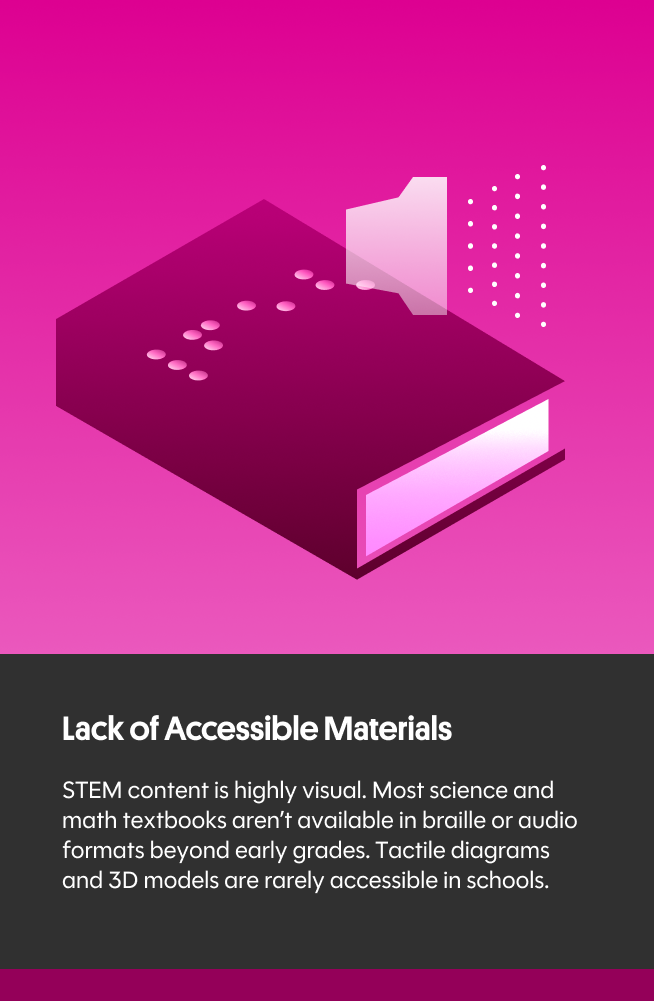
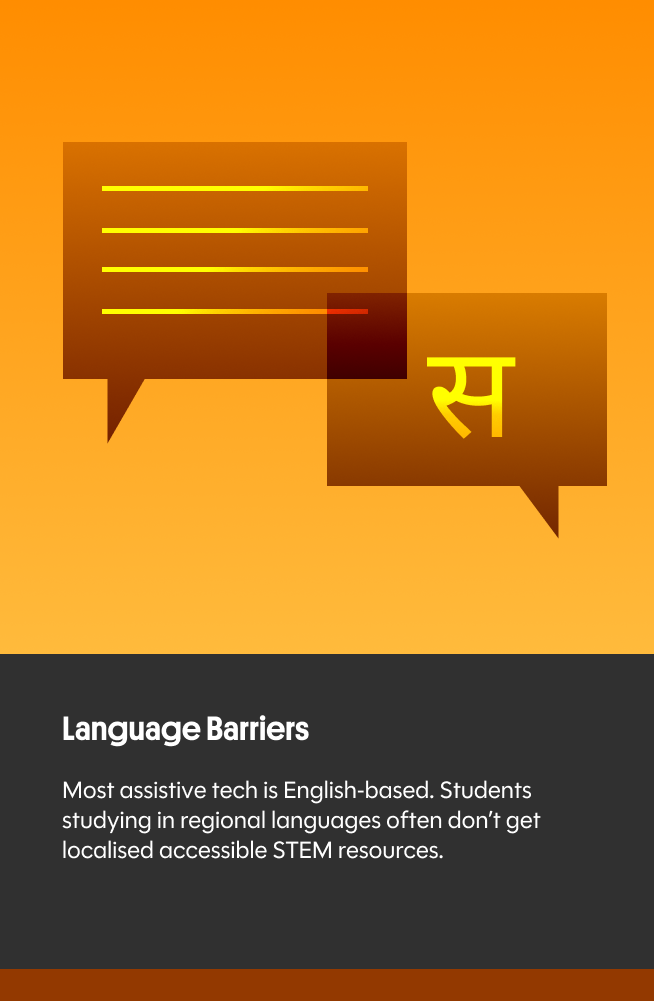
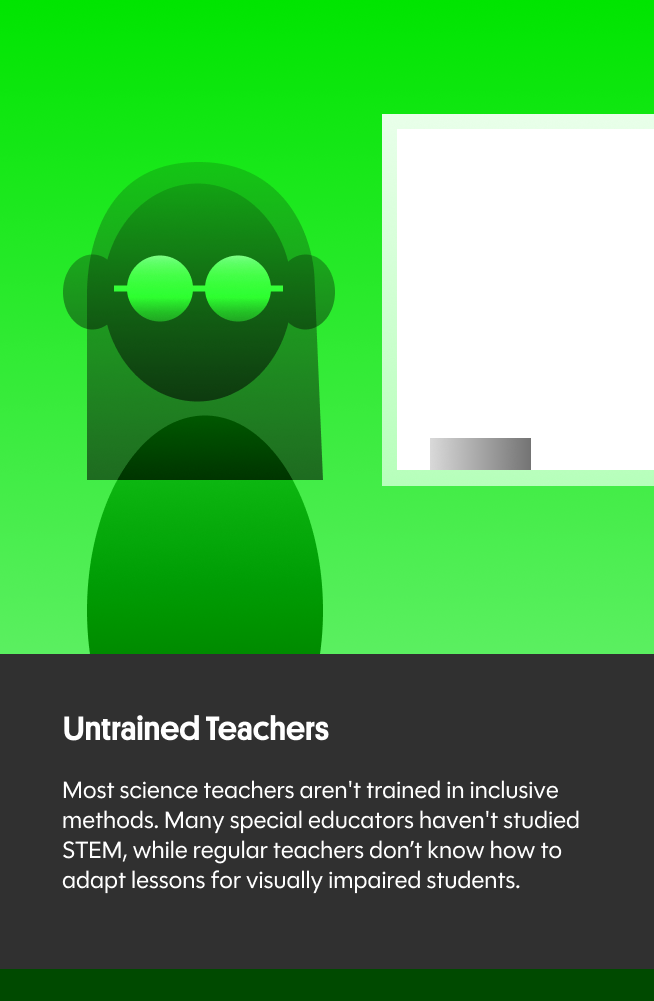
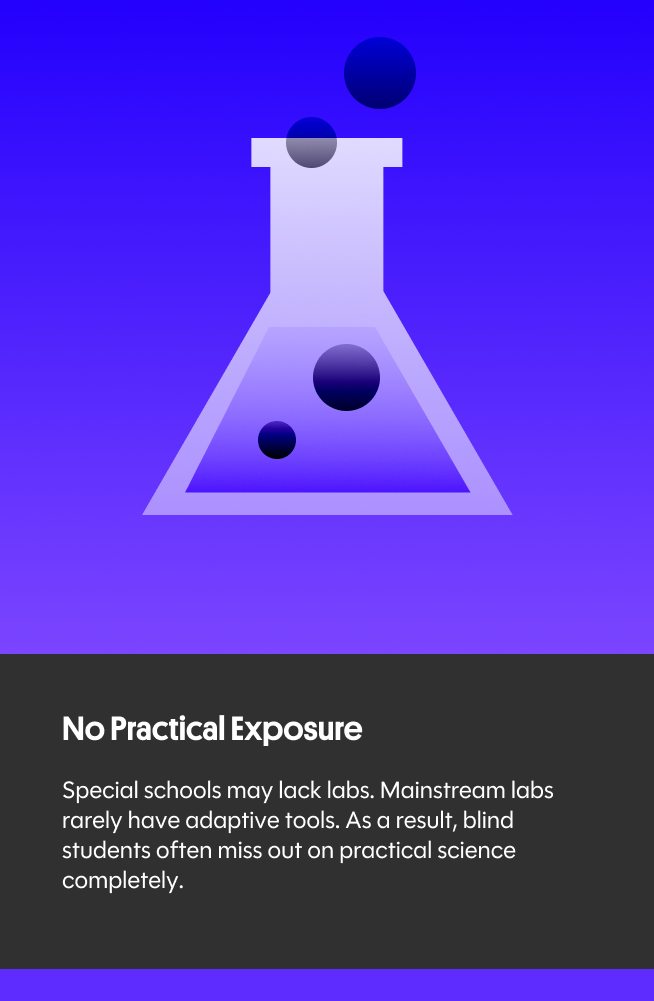
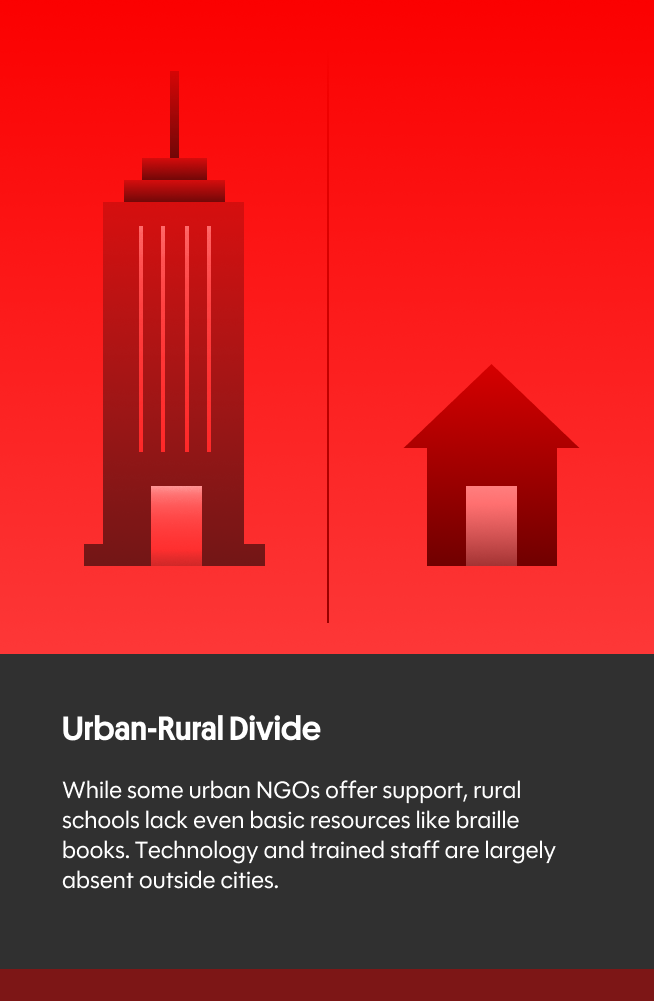
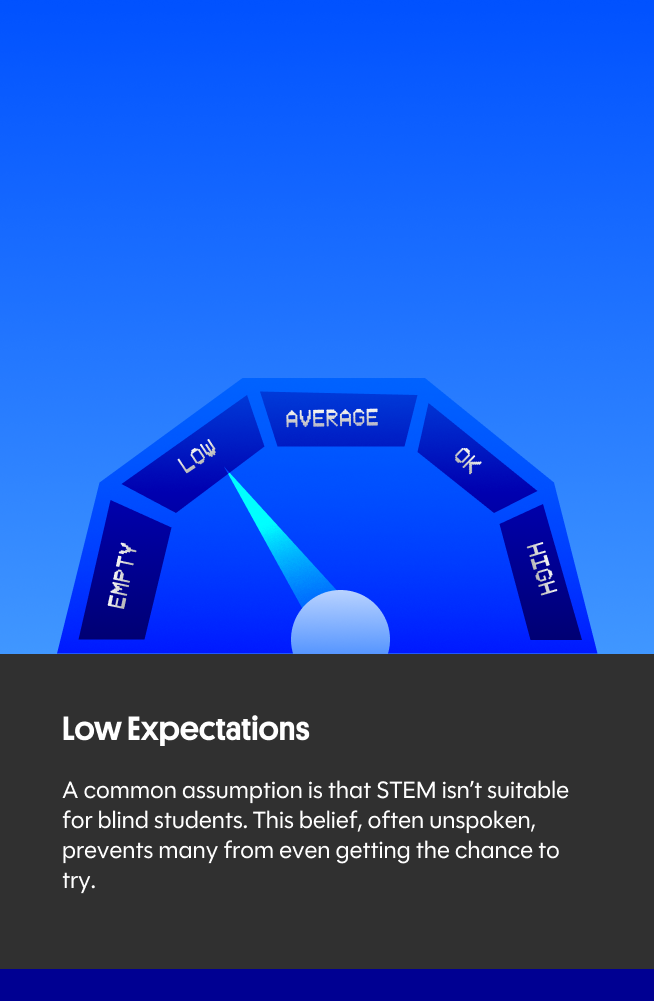
Design Strategy
To better understand the real-world educational tools used by students with visual impairments, we closely observed their existing technologies and workflows.
This included studying how screen readers like JAWS are used alongside standard keyboards, how students transcribe and read using Braille software like Duxbury, and how large-scale Braille presses and manual embossing machines operate. This exploration helped us appreciate not only the complexity and infrastructure behind accessible content creation, but also the tactile logic embedded into these systems. These insights were critical not just for grounding our designs in current reality but also for identifying gaps and opportunities where new, more intuitive tools could be introduced.






Design Strategy
To better understand the real-world educational tools used by students with visual impairments, we closely observed their existing technologies and workflows.
This included studying how screen readers like JAWS are used alongside standard keyboards, how students transcribe and read using Braille software like Duxbury, and how large-scale Braille presses and manual embossing machines operate. This exploration helped us appreciate not only the complexity and infrastructure behind accessible content creation, but also the tactile logic embedded into these systems. These insights were critical not just for grounding our designs in current reality but also for identifying gaps and opportunities where new, more intuitive tools could be introduced.
Design Strategy
To better understand the real-world educational tools used by students with visual impairments, we closely observed their existing technologies and workflows.
This included studying how screen readers like JAWS are used alongside standard keyboards, how students transcribe and read using Braille software like Duxbury, and how large-scale Braille presses and manual embossing machines operate. This exploration helped us appreciate not only the complexity and infrastructure behind accessible content creation, but also the tactile logic embedded into these systems. These insights were critical not just for grounding our designs in current reality but also for identifying gaps and opportunities where new, more intuitive tools could be introduced.
Design Strategy
To better understand the real-world educational tools used by students with visual impairments, we closely observed their existing technologies and workflows.
This included studying how screen readers like JAWS are used alongside standard keyboards, how students transcribe and read using Braille software like Duxbury, and how large-scale Braille presses and manual embossing machines operate. This exploration helped us appreciate not only the complexity and infrastructure behind accessible content creation, but also the tactile logic embedded into these systems. These insights were critical not just for grounding our designs in current reality but also for identifying gaps and opportunities where new, more intuitive tools could be introduced.






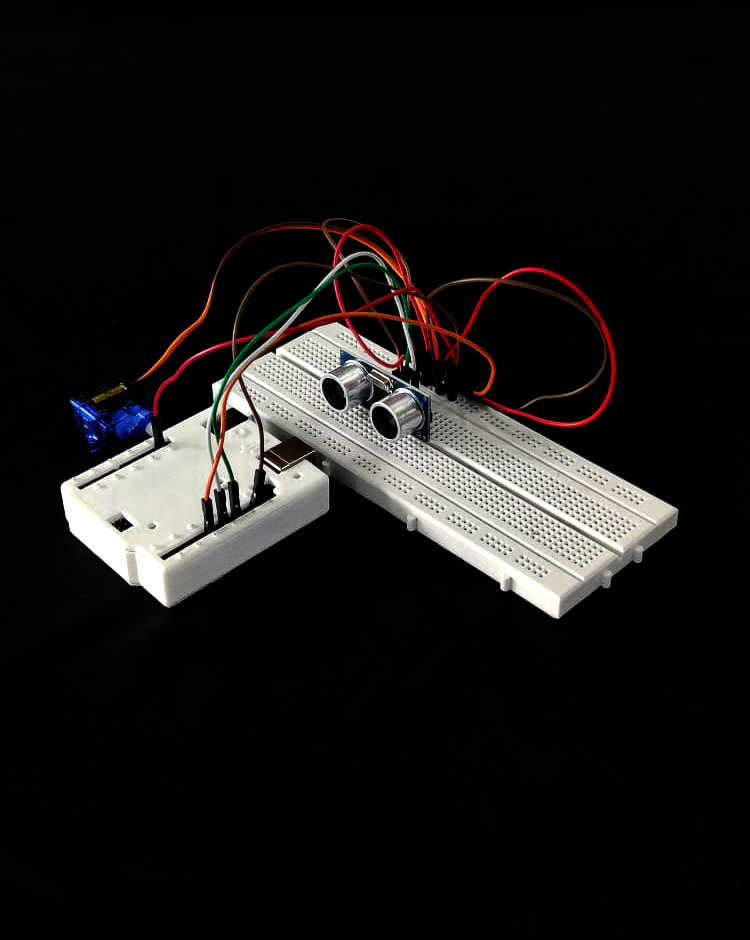
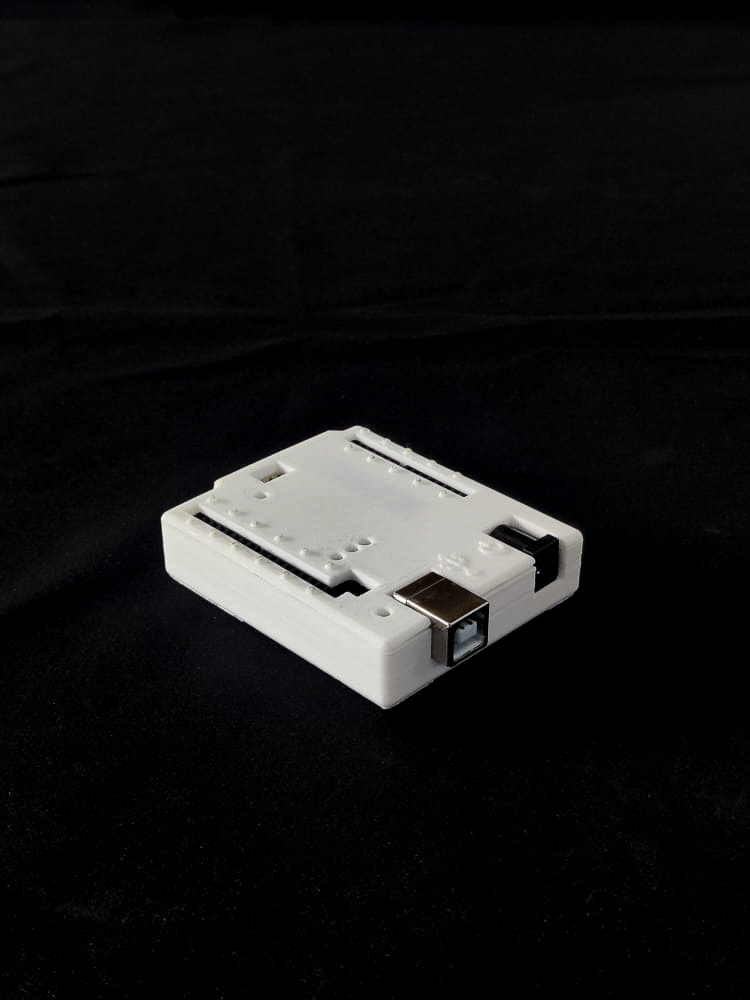
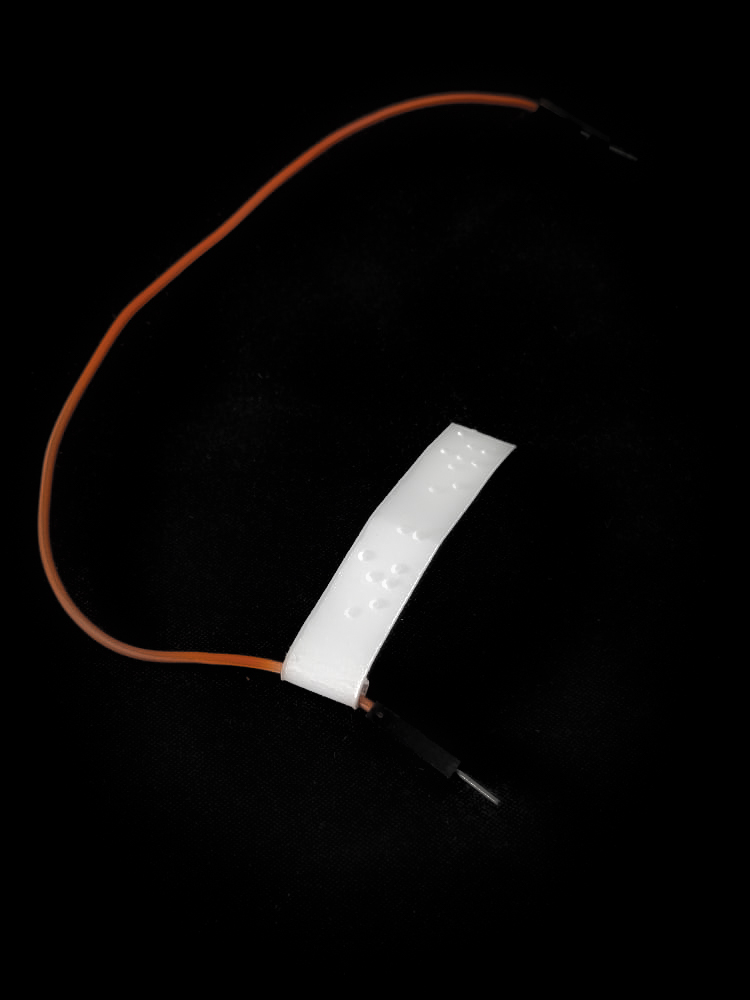
.jpg)
.jpg)
.jpg)
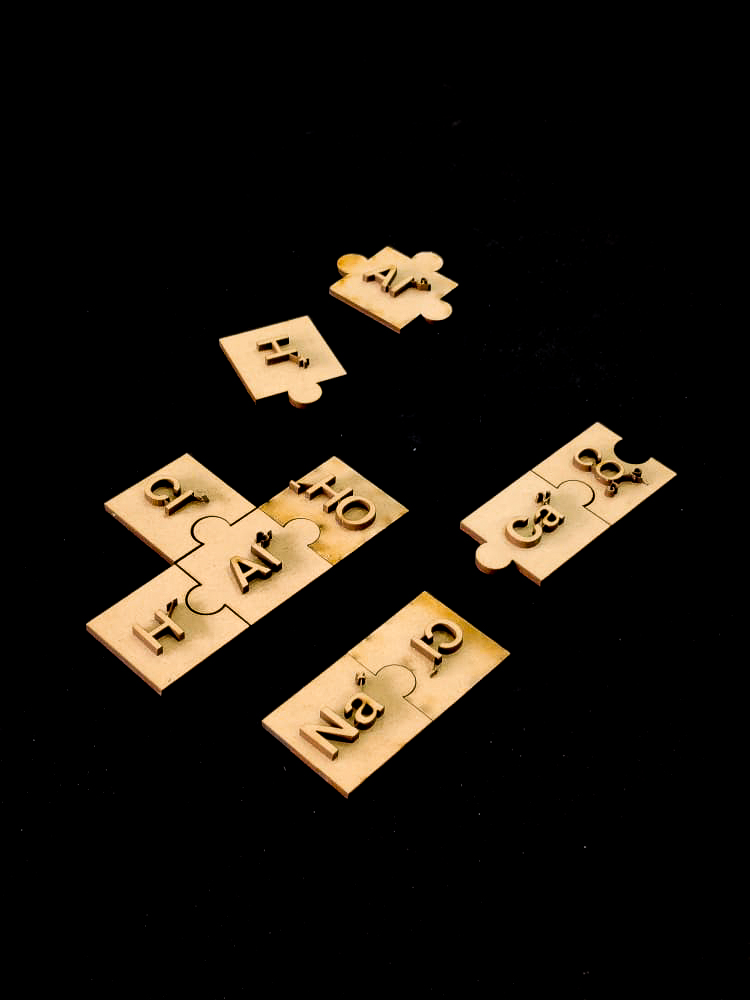
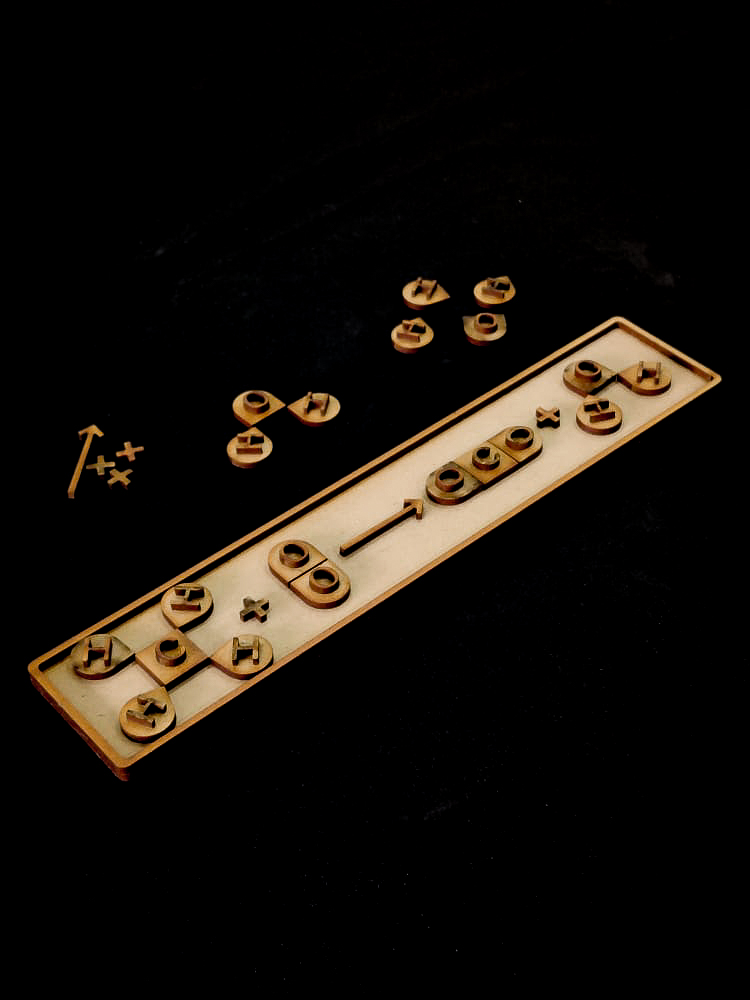
Ideation & Early Prototypes
One subject at a time, one barrier at a time.
We avoided a universal kit and instead targeted the sticky points in chemistry, physics, mathematics, robotics, and coding where visual dependence causes students to stall. For each topic we asked what could be made easier to feel, build, or understand, then developed modular, hands-on tools that stand alone yet add up to a library of touch and sound–first learning experiences.
Chemistry
Make invisible bonding rules tangible in the hands.
We created tactile tiles to explain atomic and covalent bonding. Element tiles encode valence via the number of usable corners, so learners can assemble molecules by aligning pieces. Interlocking shapes convey shared electrons, with paired connectors hinting at double bonds. It is intentionally simplified but gives a meaningful physical sense of how molecules form.
Physics
Let circuits be understood through layout, touch, and feedback.
We prototyped modular tiles for components like batteries, resistors, switches, and buzzers, each marked with raised linework and braille. As students snap tiles together, the path of current becomes a layout they can trace. Outputs shift from visual cues to sound or vibration so the logic of a circuit is learned through action and sensation rather than dials and LEDs.
Mathematics
Turn coordinate geometry into a grid you can feel.
A tactile graphing board with marked axes lets learners plot points using push pins and trace lines and curves by touch. This builds an embodied sense of scale, coordinates, and geometric patterns without relying on printed graphs, enabling students to reason about relationships directly on the board.
Robotics and Coding
Reduce wiring anxiety and make ports and logic discoverable by touch.
We 3D-printed an Arduino overlay that labels pins with braille and raised markings so students can locate I O ports confidently. Tactile tags for jumper wires help track connections during assembly and debugging. Early-stage, but the aim is a hardware and coding workflow that is navigable by touch and friendly to screen-reader habits.
Ideation & Early Prototypes
One subject at a time, one barrier at a time.
We avoided a universal kit and instead targeted the sticky points in chemistry, physics, mathematics, robotics, and coding where visual dependence causes students to stall. For each topic we asked what could be made easier to feel, build, or understand, then developed modular, hands-on tools that stand alone yet add up to a library of touch and sound–first learning experiences.
Chemistry
Make invisible bonding rules tangible in the hands.
We created tactile tiles to explain atomic and covalent bonding. Element tiles encode valence via the number of usable corners, so learners can assemble molecules by aligning pieces. Interlocking shapes convey shared electrons, with paired connectors hinting at double bonds. It is intentionally simplified but gives a meaningful physical sense of how molecules form.
Physics
Let circuits be understood through layout, touch, and feedback.
We prototyped modular tiles for components like batteries, resistors, switches, and buzzers, each marked with raised linework and braille. As students snap tiles together, the path of current becomes a layout they can trace. Outputs shift from visual cues to sound or vibration so the logic of a circuit is learned through action and sensation rather than dials and LEDs.
Mathematics
Turn coordinate geometry into a grid you can feel.
A tactile graphing board with marked axes lets learners plot points using push pins and trace lines and curves by touch. This builds an embodied sense of scale, coordinates, and geometric patterns without relying on printed graphs, enabling students to reason about relationships directly on the board.
Robotics and Coding
Reduce wiring anxiety and make ports and logic discoverable by touch.
We 3D-printed an Arduino overlay that labels pins with braille and raised markings so students can locate I O ports confidently. Tactile tags for jumper wires help track connections during assembly and debugging. Early-stage, but the aim is a hardware and coding workflow that is navigable by touch and friendly to screen-reader habits.
Ideation & Early Prototypes
One subject at a time, one barrier at a time.
We avoided a universal kit and instead targeted the sticky points in chemistry, physics, mathematics, robotics, and coding where visual dependence causes students to stall. For each topic we asked what could be made easier to feel, build, or understand, then developed modular, hands-on tools that stand alone yet add up to a library of touch and sound–first learning experiences.
Chemistry
Make invisible bonding rules tangible in the hands.
We created tactile tiles to explain atomic and covalent bonding. Element tiles encode valence via the number of usable corners, so learners can assemble molecules by aligning pieces. Interlocking shapes convey shared electrons, with paired connectors hinting at double bonds. It is intentionally simplified but gives a meaningful physical sense of how molecules form.
Physics
Let circuits be understood through layout, touch, and feedback.
We prototyped modular tiles for components like batteries, resistors, switches, and buzzers, each marked with raised linework and braille. As students snap tiles together, the path of current becomes a layout they can trace. Outputs shift from visual cues to sound or vibration so the logic of a circuit is learned through action and sensation rather than dials and LEDs.
Mathematics
Turn coordinate geometry into a grid you can feel.
A tactile graphing board with marked axes lets learners plot points using push pins and trace lines and curves by touch. This builds an embodied sense of scale, coordinates, and geometric patterns without relying on printed graphs, enabling students to reason about relationships directly on the board.
Robotics and Coding
Reduce wiring anxiety and make ports and logic discoverable by touch.
We 3D-printed an Arduino overlay that labels pins with braille and raised markings so students can locate I O ports confidently. Tactile tags for jumper wires help track connections during assembly and debugging. Early-stage, but the aim is a hardware and coding workflow that is navigable by touch and friendly to screen-reader habits.
Ideation & Early Prototypes
One subject at a time, one barrier at a time.
We avoided a universal kit and instead targeted the sticky points in chemistry, physics, mathematics, robotics, and coding where visual dependence causes students to stall. For each topic we asked what could be made easier to feel, build, or understand, then developed modular, hands-on tools that stand alone yet add up to a library of touch and sound–first learning experiences.
Chemistry
Make invisible bonding rules tangible in the hands.
We created tactile tiles to explain atomic and covalent bonding. Element tiles encode valence via the number of usable corners, so learners can assemble molecules by aligning pieces. Interlocking shapes convey shared electrons, with paired connectors hinting at double bonds. It is intentionally simplified but gives a meaningful physical sense of how molecules form.
Physics
Let circuits be understood through layout, touch, and feedback.
We prototyped modular tiles for components like batteries, resistors, switches, and buzzers, each marked with raised linework and braille. As students snap tiles together, the path of current becomes a layout they can trace. Outputs shift from visual cues to sound or vibration so the logic of a circuit is learned through action and sensation rather than dials and LEDs.
Mathematics
Turn coordinate geometry into a grid you can feel.
A tactile graphing board with marked axes lets learners plot points using push pins and trace lines and curves by touch. This builds an embodied sense of scale, coordinates, and geometric patterns without relying on printed graphs, enabling students to reason about relationships directly on the board.
Robotics and Coding
Reduce wiring anxiety and make ports and logic discoverable by touch.
We 3D-printed an Arduino overlay that labels pins with braille and raised markings so students can locate I O ports confidently. Tactile tags for jumper wires help track connections during assembly and debugging. Early-stage, but the aim is a hardware and coding workflow that is navigable by touch and friendly to screen-reader habits.



.jpg)
.jpg)
.jpg)


User Testing & Pivot
We took our prototypes into classrooms and let students show us what mattered.
At the Blind People’s Association, we ran sessions with multiple subject-based kits. Students were curious and willing to try each one, but their energy spiked when they interacted with the robotics prototype. They leaned in, asked questions, and wanted to keep experimenting. Even instructors observed that robotics had the strongest potential compared to chemistry or math tools. That combination of user enthusiasm and teacher endorsement gave us a clear signal. Rather than spread ourselves thin across every subject, we decided to channel our efforts into advancing the robotics-based tools, where both engagement and long-term relevance felt the highest.
User Testing & Pivot
We took our prototypes into classrooms and let students show us what mattered.
At the Blind People’s Association, we ran sessions with multiple subject-based kits. Students were curious and willing to try each one, but their energy spiked when they interacted with the robotics prototype. They leaned in, asked questions, and wanted to keep experimenting. Even instructors observed that robotics had the strongest potential compared to chemistry or math tools. That combination of user enthusiasm and teacher endorsement gave us a clear signal. Rather than spread ourselves thin across every subject, we decided to channel our efforts into advancing the robotics-based tools, where both engagement and long-term relevance felt the highest.
User Testing & Pivot
We took our prototypes into classrooms and let students show us what mattered.
At the Blind People’s Association, we ran sessions with multiple subject-based kits. Students were curious and willing to try each one, but their energy spiked when they interacted with the robotics prototype. They leaned in, asked questions, and wanted to keep experimenting. Even instructors observed that robotics had the strongest potential compared to chemistry or math tools. That combination of user enthusiasm and teacher endorsement gave us a clear signal. Rather than spread ourselves thin across every subject, we decided to channel our efforts into advancing the robotics-based tools, where both engagement and long-term relevance felt the highest.
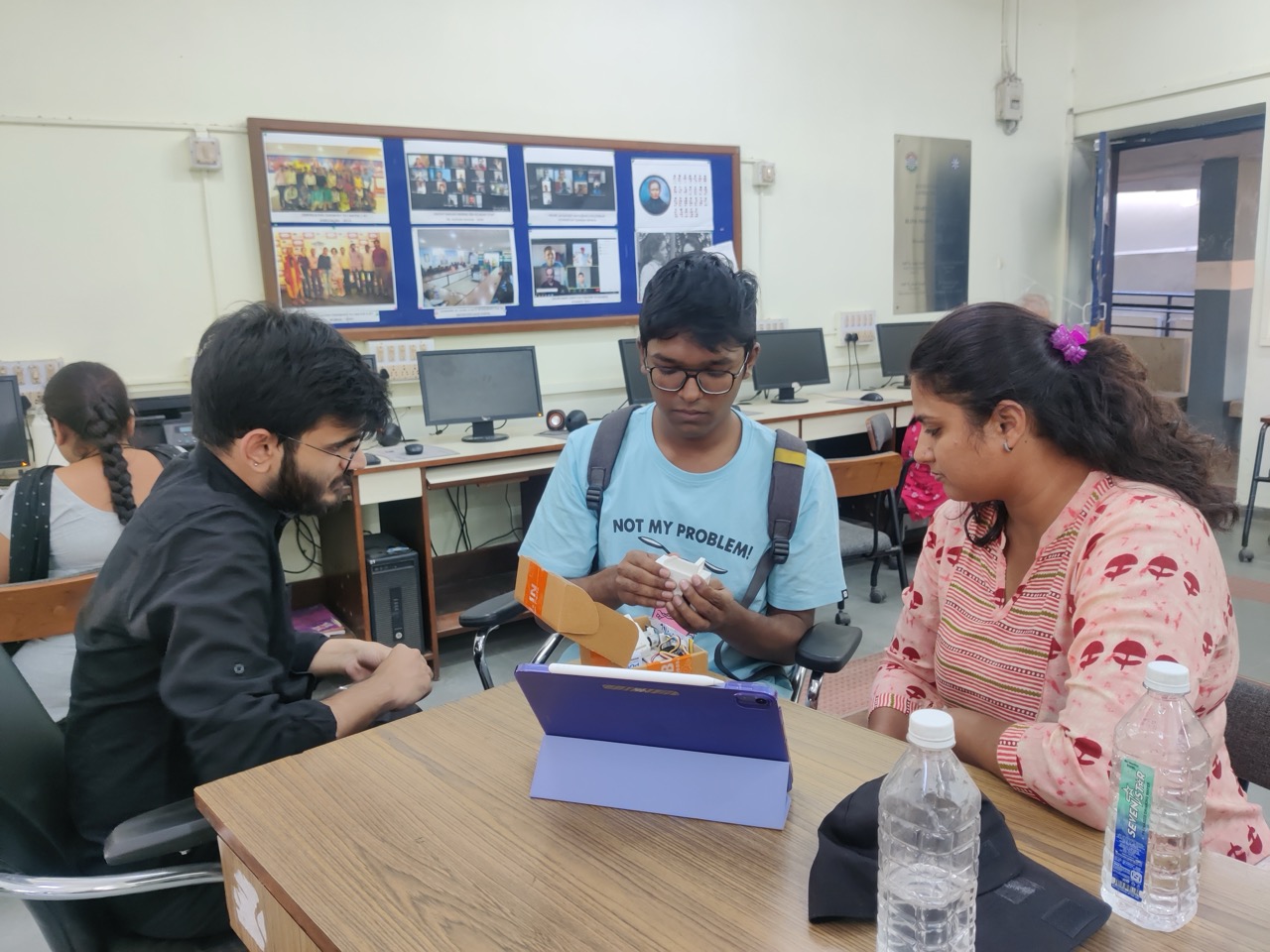

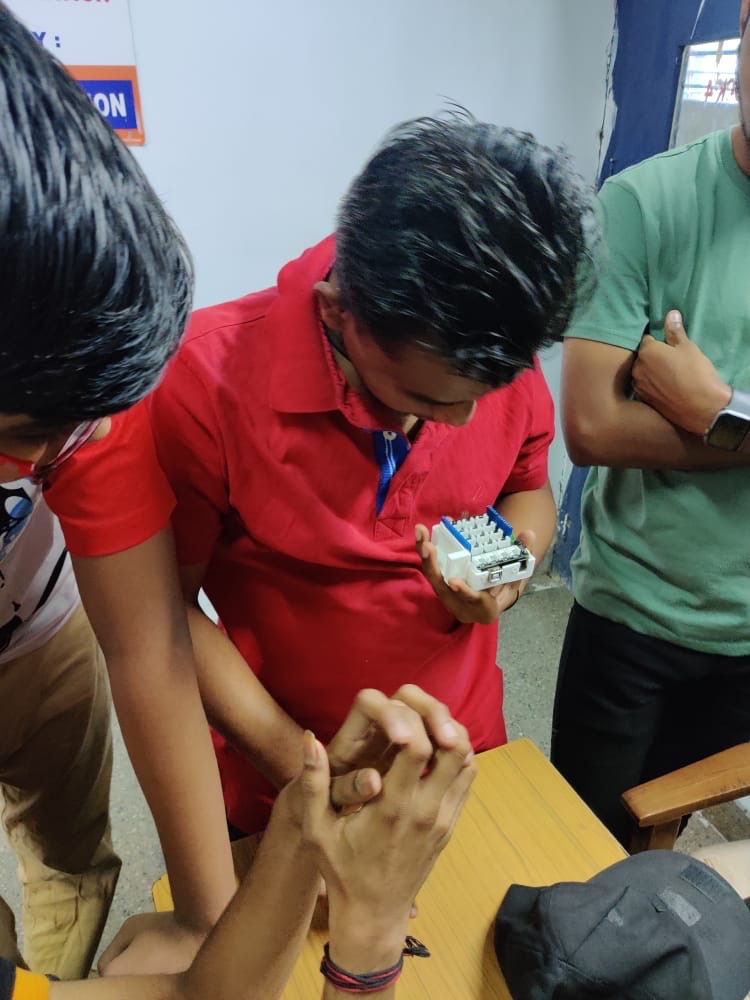
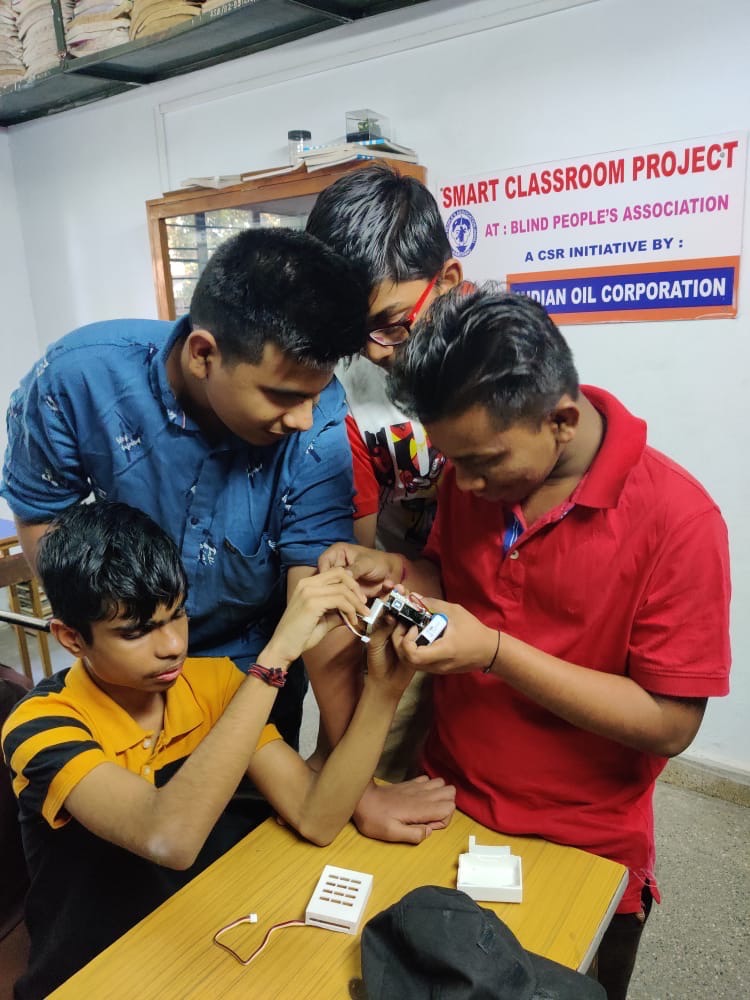
Key Builds
We moved from scattered prototypes to one focused build that carried the most promise.
Classroom feedback made it clear that robotics was the strongest track, but our first prototype showed us what still needed work. Wiring had to be simpler, more tactile, and less error-prone, and the project needed to be more than a demonstration, it had to spark ideas of how tech could be used in daily life. That thinking led to Buzzcap, a cap fitted with an ultrasonic sensor that detects obstacles and sends vibration feedback. It was simple, relatable, and most importantly, self-buildable. With guidance from our mentor, Mohit Ahuja, we adopted Grove modules so sensors and components could snap onto an Arduino without messy wiring, making the process faster and far more accessible.
At the same time, we saw another barrier emerge: coding itself. Screen readers made it tedious to navigate and debug line-based code, slowing students down. To address this, we designed a conceptual accessible coding platform. We took inspiration from Scratch’s block-based approach but reimagined it for low-vision and blind learners with high-contrast interfaces, bold fonts, and modular blocks that could be pieced together logically. This allowed students to focus on programming concepts without being held back by the interface.
Together, Buzzcap and the accessible coding platform became the two key builds that anchored the project—one tangible and wearable, the other digital and conceptual—both designed to show that STEM can be made inclusive through small, thoughtful shifts in design.

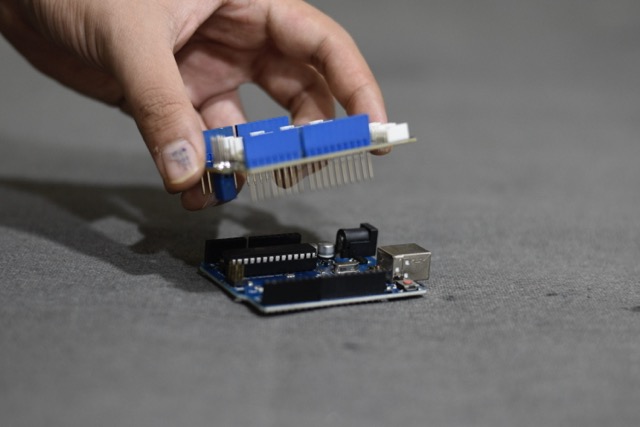
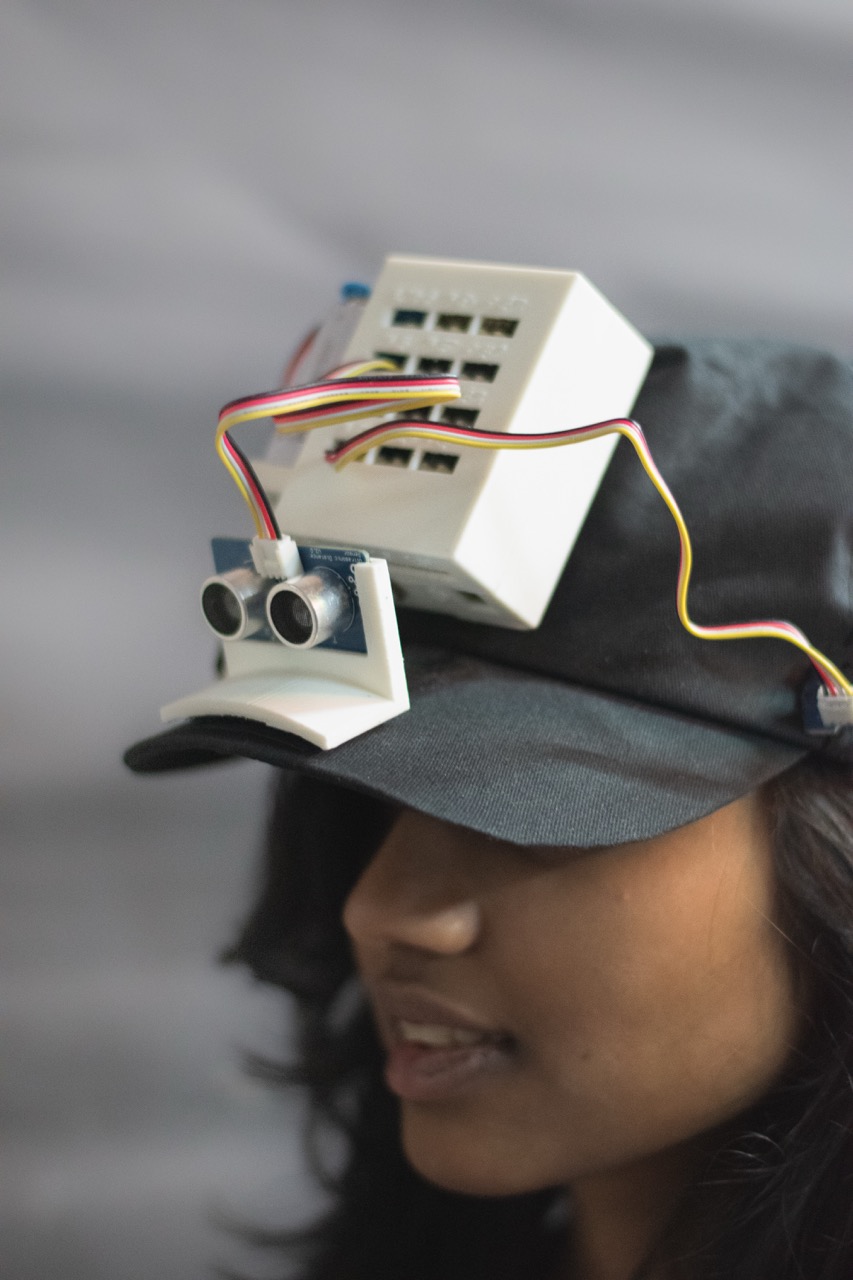


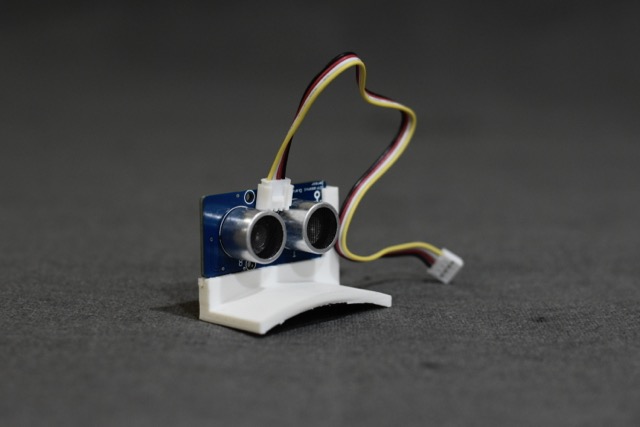
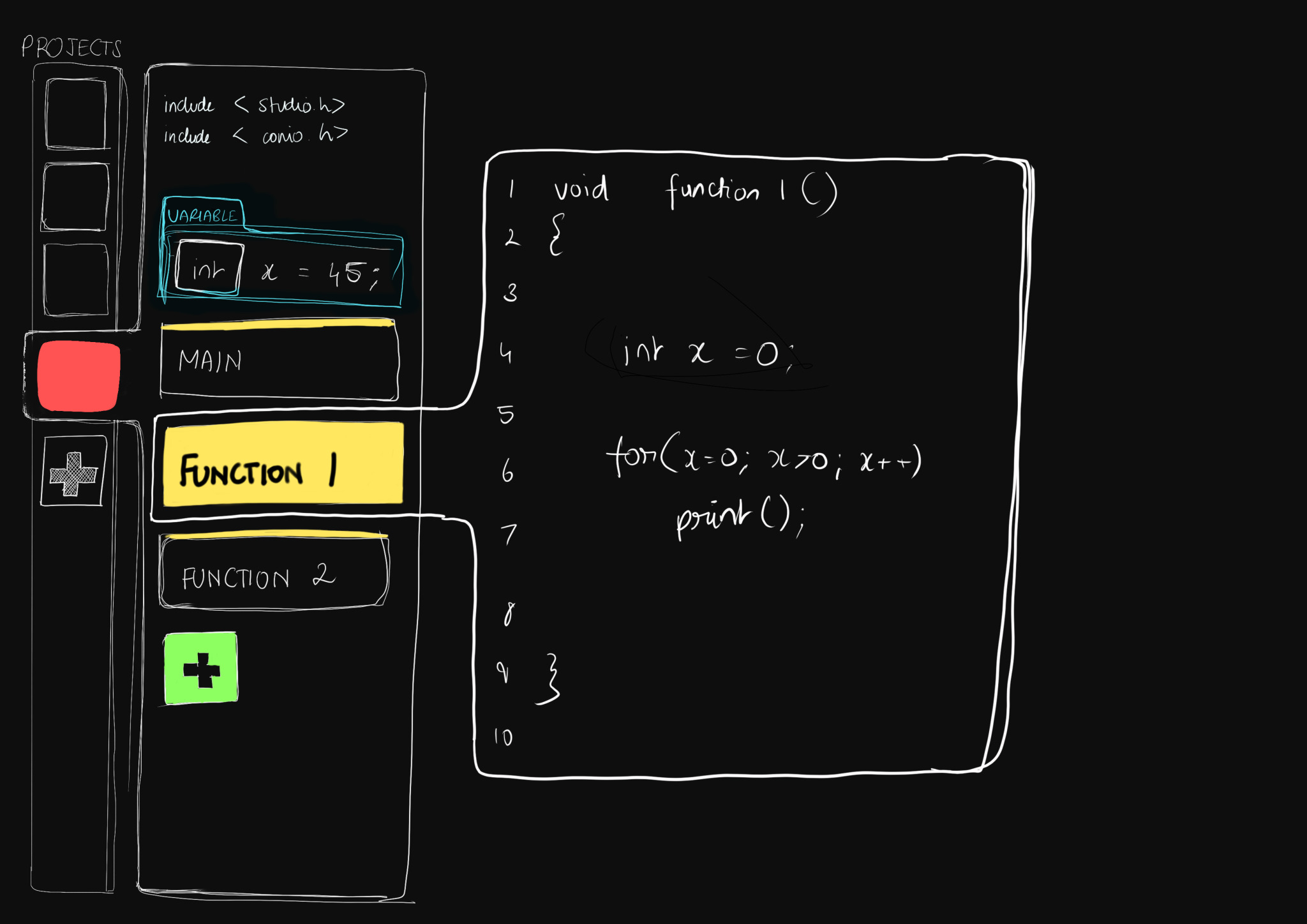

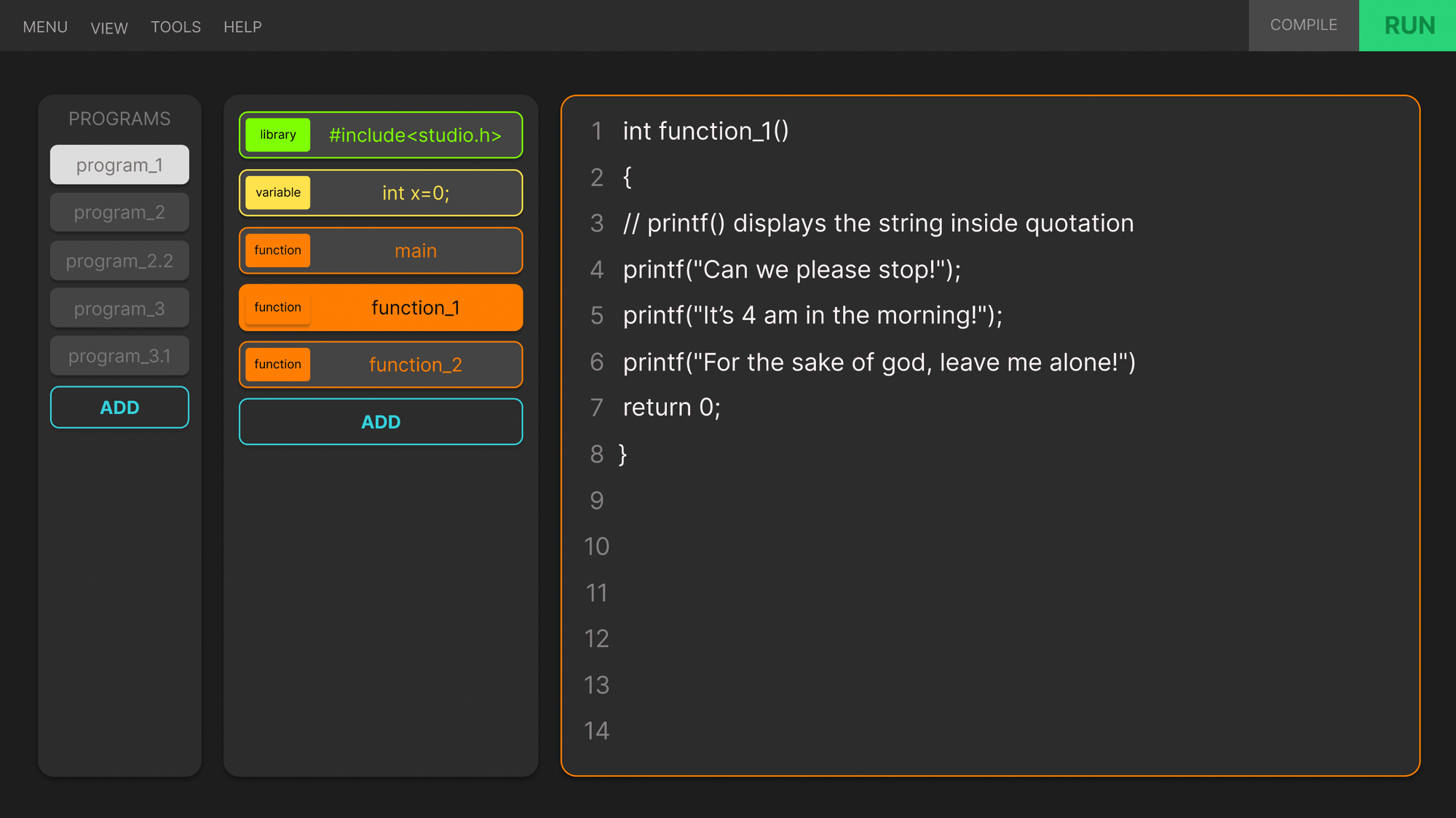
Key Builds
We moved from scattered prototypes to one focused build that carried the most promise.
Classroom feedback made it clear that robotics was the strongest track, but our first prototype showed us what still needed work. Wiring had to be simpler, more tactile, and less error-prone, and the project needed to be more than a demonstration, it had to spark ideas of how tech could be used in daily life. That thinking led to Buzzcap, a cap fitted with an ultrasonic sensor that detects obstacles and sends vibration feedback. It was simple, relatable, and most importantly, self-buildable. With guidance from our mentor, Mohit Ahuja, we adopted Grove modules so sensors and components could snap onto an Arduino without messy wiring, making the process faster and far more accessible.
At the same time, we saw another barrier emerge: coding itself. Screen readers made it tedious to navigate and debug line-based code, slowing students down. To address this, we designed a conceptual accessible coding platform. We took inspiration from Scratch’s block-based approach but reimagined it for low-vision and blind learners with high-contrast interfaces, bold fonts, and modular blocks that could be pieced together logically. This allowed students to focus on programming concepts without being held back by the interface.
Together, Buzzcap and the accessible coding platform became the two key builds that anchored the project—one tangible and wearable, the other digital and conceptual—both designed to show that STEM can be made inclusive through small, thoughtful shifts in design.
Key Builds
We moved from scattered prototypes to one focused build that carried the most promise.
Classroom feedback made it clear that robotics was the strongest track, but our first prototype showed us what still needed work. Wiring had to be simpler, more tactile, and less error-prone, and the project needed to be more than a demonstration, it had to spark ideas of how tech could be used in daily life. That thinking led to Buzzcap, a cap fitted with an ultrasonic sensor that detects obstacles and sends vibration feedback. It was simple, relatable, and most importantly, self-buildable. With guidance from our mentor, Mohit Ahuja, we adopted Grove modules so sensors and components could snap onto an Arduino without messy wiring, making the process faster and far more accessible.
At the same time, we saw another barrier emerge: coding itself. Screen readers made it tedious to navigate and debug line-based code, slowing students down. To address this, we designed a conceptual accessible coding platform. We took inspiration from Scratch’s block-based approach but reimagined it for low-vision and blind learners with high-contrast interfaces, bold fonts, and modular blocks that could be pieced together logically. This allowed students to focus on programming concepts without being held back by the interface.
Together, Buzzcap and the accessible coding platform became the two key builds that anchored the project—one tangible and wearable, the other digital and conceptual—both designed to show that STEM can be made inclusive through small, thoughtful shifts in design.
Key Builds
We moved from scattered prototypes to one focused build that carried the most promise.
Classroom feedback made it clear that robotics was the strongest track, but our first prototype showed us what still needed work. Wiring had to be simpler, more tactile, and less error-prone, and the project needed to be more than a demonstration, it had to spark ideas of how tech could be used in daily life. That thinking led to Buzzcap, a cap fitted with an ultrasonic sensor that detects obstacles and sends vibration feedback. It was simple, relatable, and most importantly, self-buildable. With guidance from our mentor, Mohit Ahuja, we adopted Grove modules so sensors and components could snap onto an Arduino without messy wiring, making the process faster and far more accessible.
At the same time, we saw another barrier emerge: coding itself. Screen readers made it tedious to navigate and debug line-based code, slowing students down. To address this, we designed a conceptual accessible coding platform. We took inspiration from Scratch’s block-based approach but reimagined it for low-vision and blind learners with high-contrast interfaces, bold fonts, and modular blocks that could be pieced together logically. This allowed students to focus on programming concepts without being held back by the interface.
Together, Buzzcap and the accessible coding platform became the two key builds that anchored the project—one tangible and wearable, the other digital and conceptual—both designed to show that STEM can be made inclusive through small, thoughtful shifts in design.









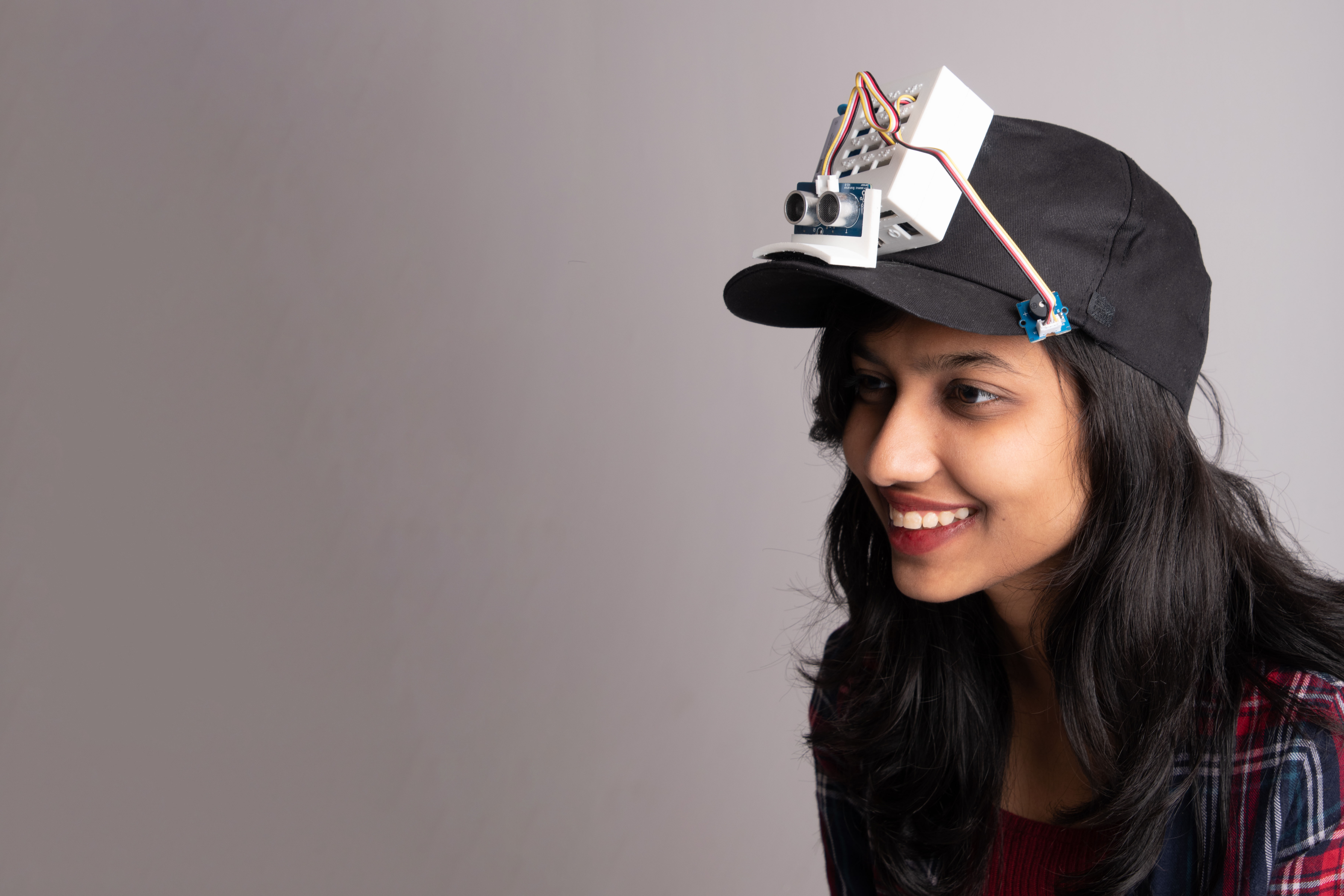




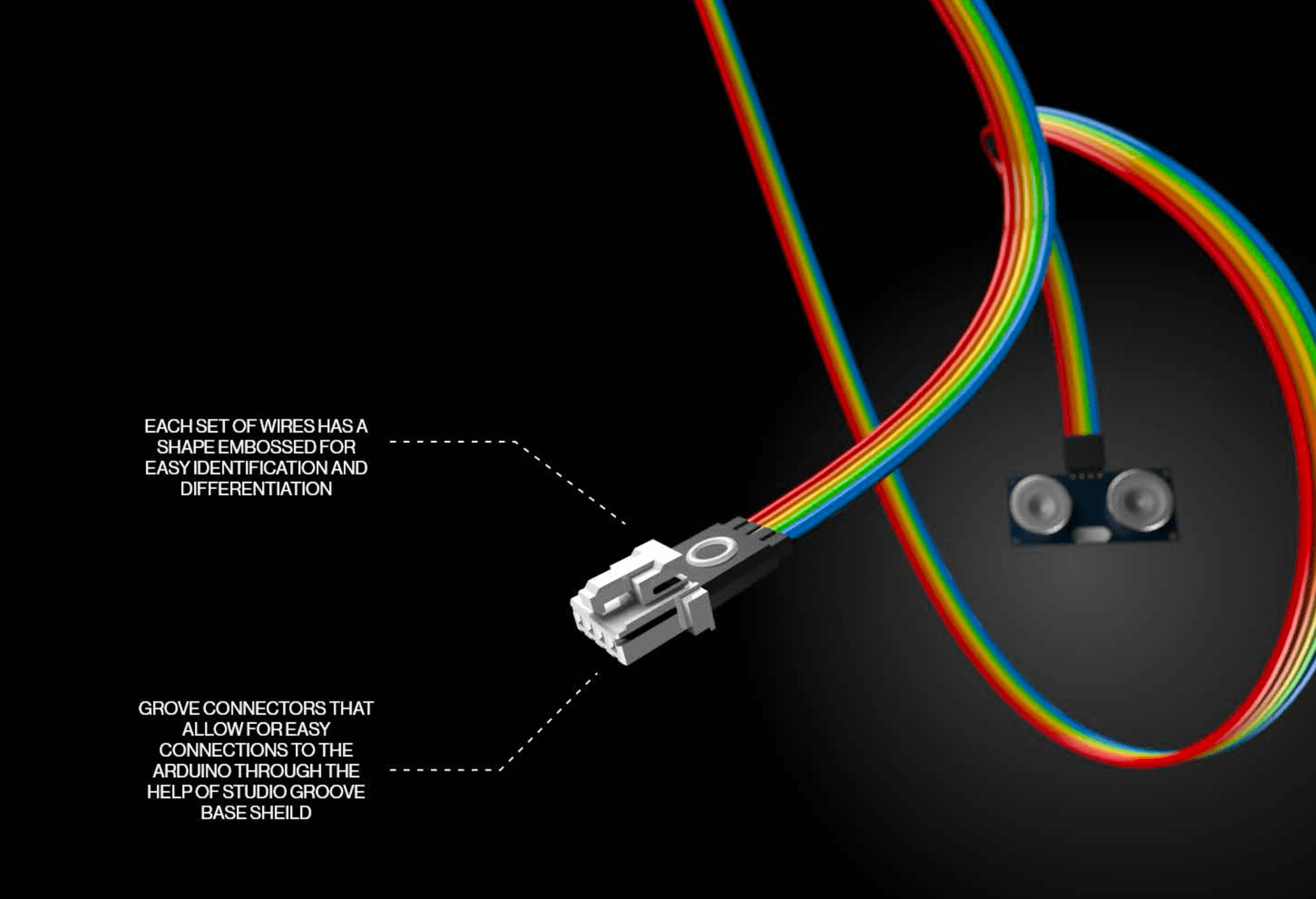
Outcomes and Next
We wanted the outcomes to be more than prototypes they had to spark learning, independence, and possibility.
Buzzcap emerged as a head-worn assistive device that uses ultrasonic sensors to detect obstacles and buzzes gently to build spatial awareness through touch. We simplified the electronics with modular components and braille-labeled ports so visually impaired students could assemble the device themselves. It was designed not only as an alternative to the white cane, but as a skill-building experience where making was as important as using.
Alongside Buzzcap, we developed the concept for an accessible coding platform. Inspired by Scratch’s block-based structure and the clarity of Excel’s tabular layout, it featured high-contrast visuals, keyboard-first navigation, and audio parsing tailored for screen readers. Crucially, it let students navigate code by blocks rather than line by line, easing the frustrations of traditional text-to-speech programming.
These directions were shaped by classroom testing, where robotics consistently sparked the most enthusiasm. Mentors and educators, including Mohit Ahuja, recognized their potential not only for learning STEM but also for self-expression and independence. The project went on to be shortlisted for the Lexus Design Award 2023, shared with schools and NGOs across Gujarat and Odisha, and initiated discussions with CSR partners on scaling. Looking ahead, the vision extends to regional language support, teacher training, and faster braille transcription, steps toward making STEM a language every learner can touch, hear, and explore.
Outcomes and Next
We wanted the outcomes to be more than prototypes they had to spark learning, independence, and possibility.
Buzzcap emerged as a head-worn assistive device that uses ultrasonic sensors to detect obstacles and buzzes gently to build spatial awareness through touch. We simplified the electronics with modular components and braille-labeled ports so visually impaired students could assemble the device themselves. It was designed not only as an alternative to the white cane, but as a skill-building experience where making was as important as using.
Alongside Buzzcap, we developed the concept for an accessible coding platform. Inspired by Scratch’s block-based structure and the clarity of Excel’s tabular layout, it featured high-contrast visuals, keyboard-first navigation, and audio parsing tailored for screen readers. Crucially, it let students navigate code by blocks rather than line by line, easing the frustrations of traditional text-to-speech programming.
These directions were shaped by classroom testing, where robotics consistently sparked the most enthusiasm. Mentors and educators, including Mohit Ahuja, recognized their potential not only for learning STEM but also for self-expression and independence. The project went on to be shortlisted for the Lexus Design Award 2023, shared with schools and NGOs across Gujarat and Odisha, and initiated discussions with CSR partners on scaling. Looking ahead, the vision extends to regional language support, teacher training, and faster braille transcription, steps toward making STEM a language every learner can touch, hear, and explore.
Outcomes and Next
We wanted the outcomes to be more than prototypes they had to spark learning, independence, and possibility.
Buzzcap emerged as a head-worn assistive device that uses ultrasonic sensors to detect obstacles and buzzes gently to build spatial awareness through touch. We simplified the electronics with modular components and braille-labeled ports so visually impaired students could assemble the device themselves. It was designed not only as an alternative to the white cane, but as a skill-building experience where making was as important as using.
Alongside Buzzcap, we developed the concept for an accessible coding platform. Inspired by Scratch’s block-based structure and the clarity of Excel’s tabular layout, it featured high-contrast visuals, keyboard-first navigation, and audio parsing tailored for screen readers. Crucially, it let students navigate code by blocks rather than line by line, easing the frustrations of traditional text-to-speech programming.
These directions were shaped by classroom testing, where robotics consistently sparked the most enthusiasm. Mentors and educators, including Mohit Ahuja, recognized their potential not only for learning STEM but also for self-expression and independence. The project went on to be shortlisted for the Lexus Design Award 2023, shared with schools and NGOs across Gujarat and Odisha, and initiated discussions with CSR partners on scaling. Looking ahead, the vision extends to regional language support, teacher training, and faster braille transcription, steps toward making STEM a language every learner can touch, hear, and explore.
Outcomes and Next
We wanted the outcomes to be more than prototypes they had to spark learning, independence, and possibility.
Buzzcap emerged as a head-worn assistive device that uses ultrasonic sensors to detect obstacles and buzzes gently to build spatial awareness through touch. We simplified the electronics with modular components and braille-labeled ports so visually impaired students could assemble the device themselves. It was designed not only as an alternative to the white cane, but as a skill-building experience where making was as important as using.
Alongside Buzzcap, we developed the concept for an accessible coding platform. Inspired by Scratch’s block-based structure and the clarity of Excel’s tabular layout, it featured high-contrast visuals, keyboard-first navigation, and audio parsing tailored for screen readers. Crucially, it let students navigate code by blocks rather than line by line, easing the frustrations of traditional text-to-speech programming.
These directions were shaped by classroom testing, where robotics consistently sparked the most enthusiasm. Mentors and educators, including Mohit Ahuja, recognized their potential not only for learning STEM but also for self-expression and independence. The project went on to be shortlisted for the Lexus Design Award 2023, shared with schools and NGOs across Gujarat and Odisha, and initiated discussions with CSR partners on scaling. Looking ahead, the vision extends to regional language support, teacher training, and faster braille transcription, steps toward making STEM a language every learner can touch, hear, and explore.








.jpg)
.jpg)
